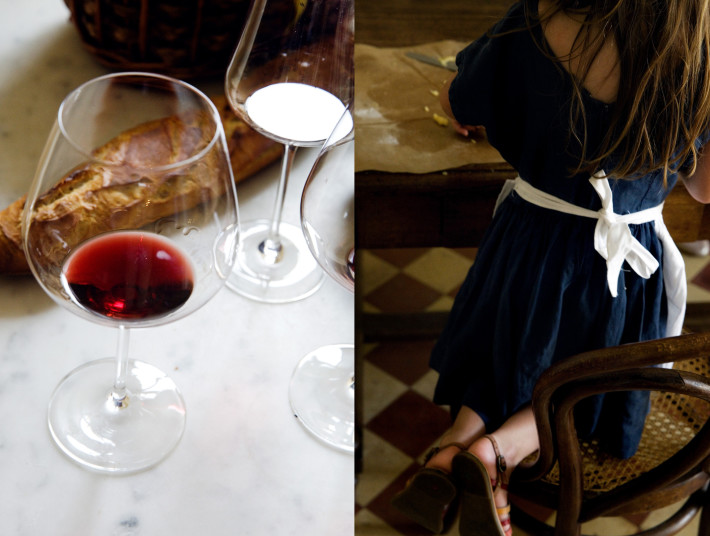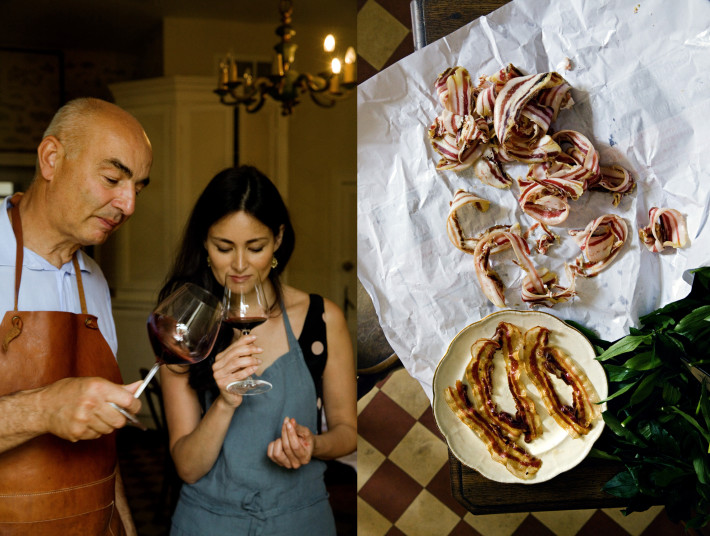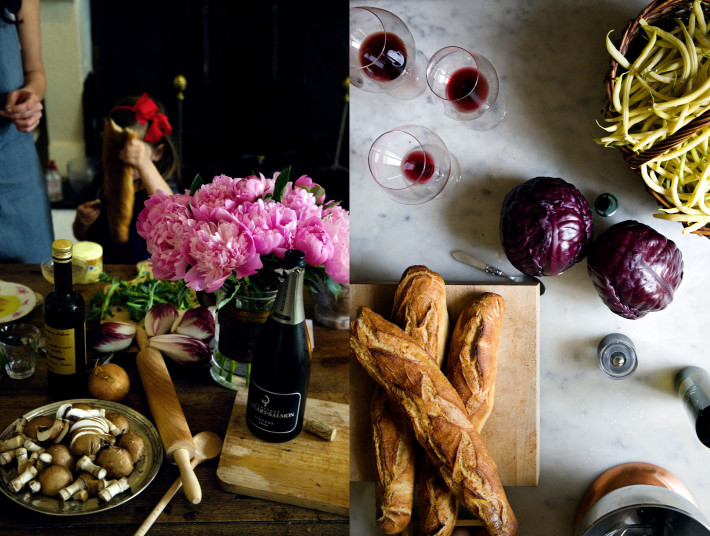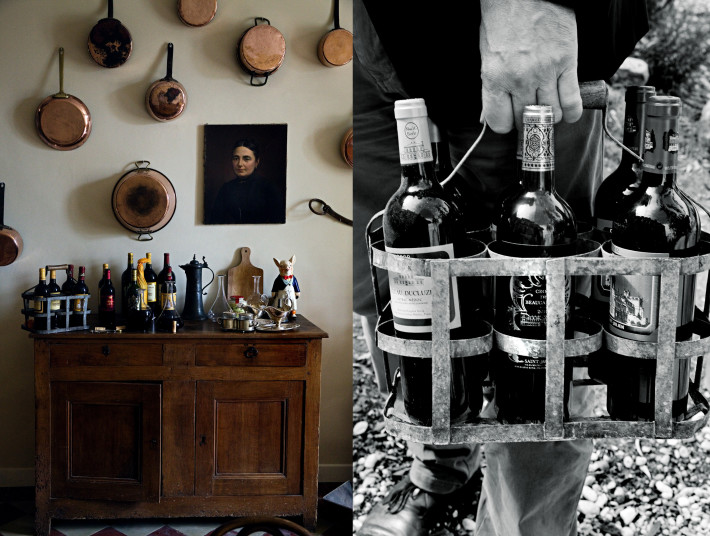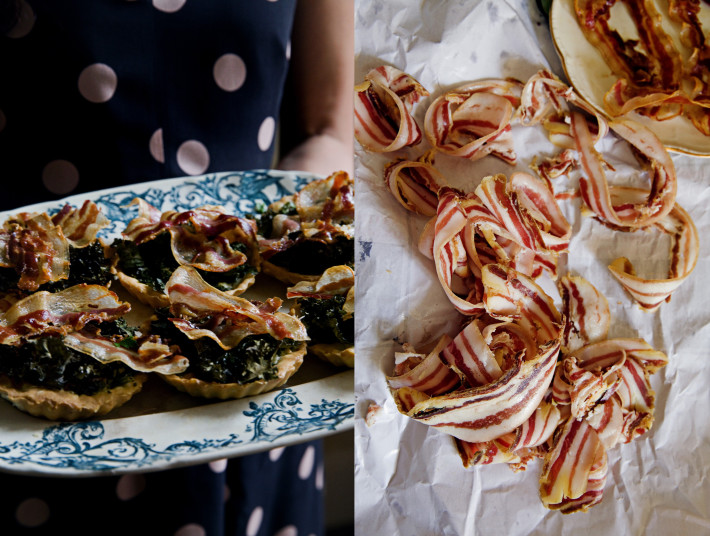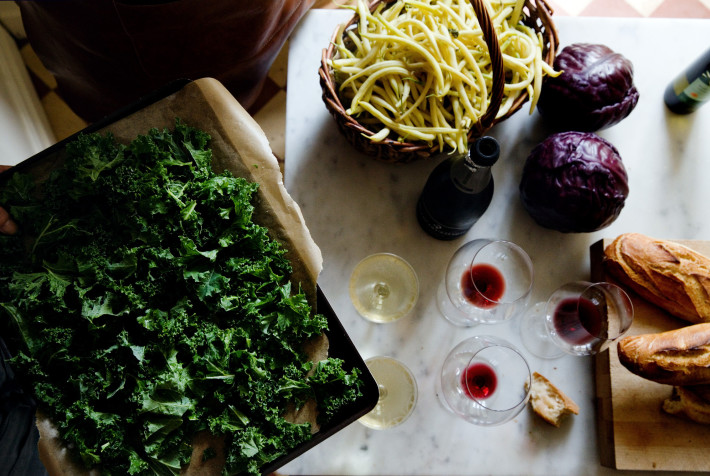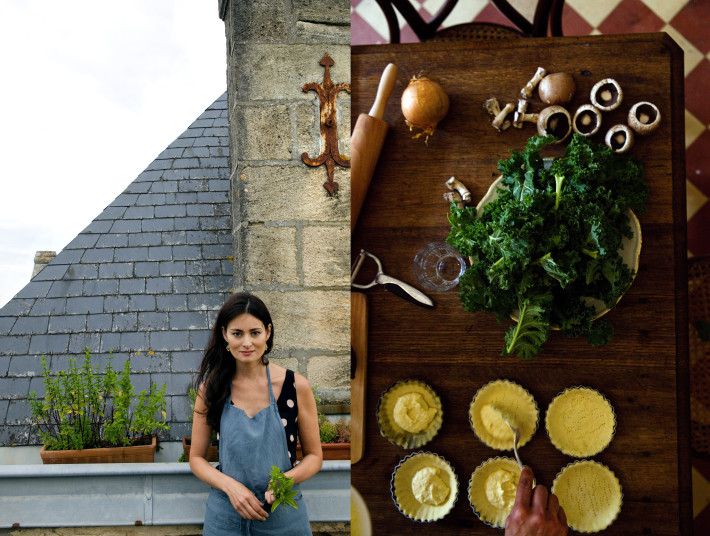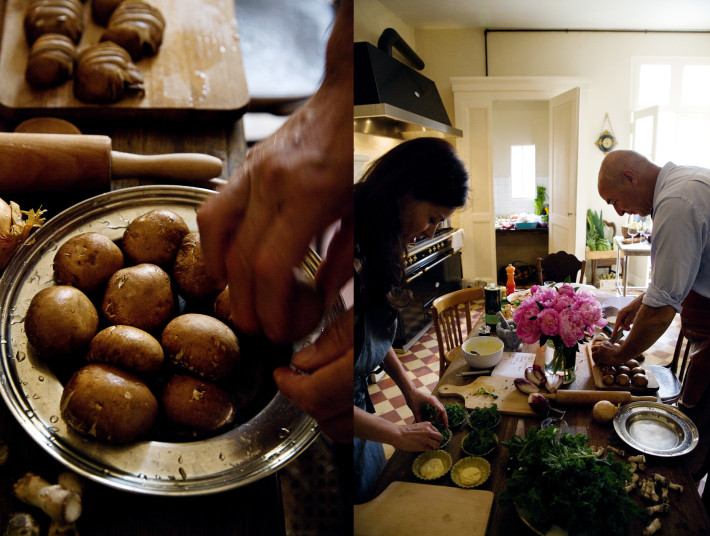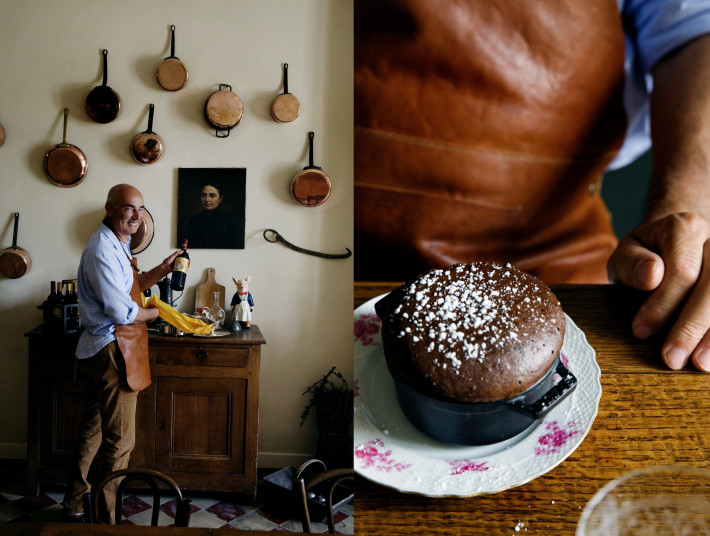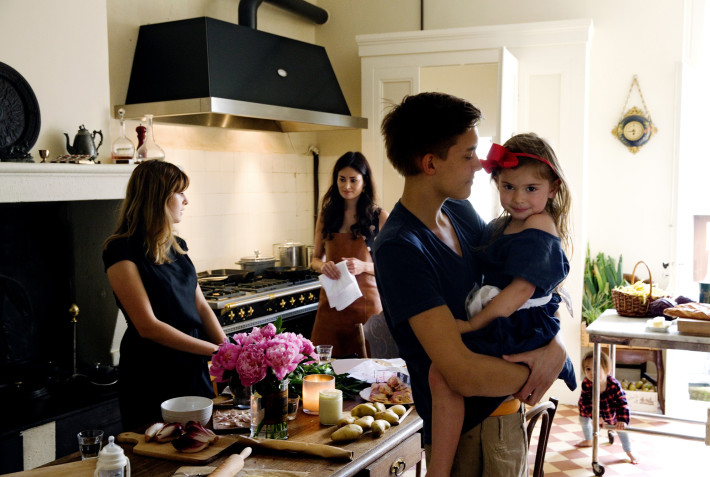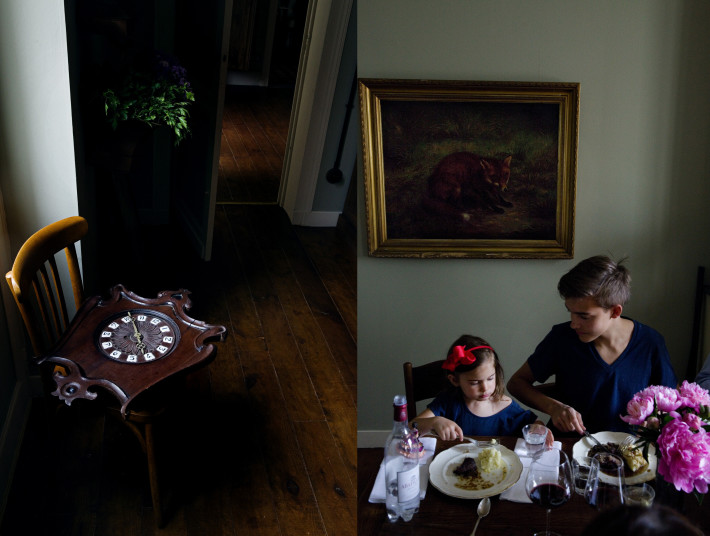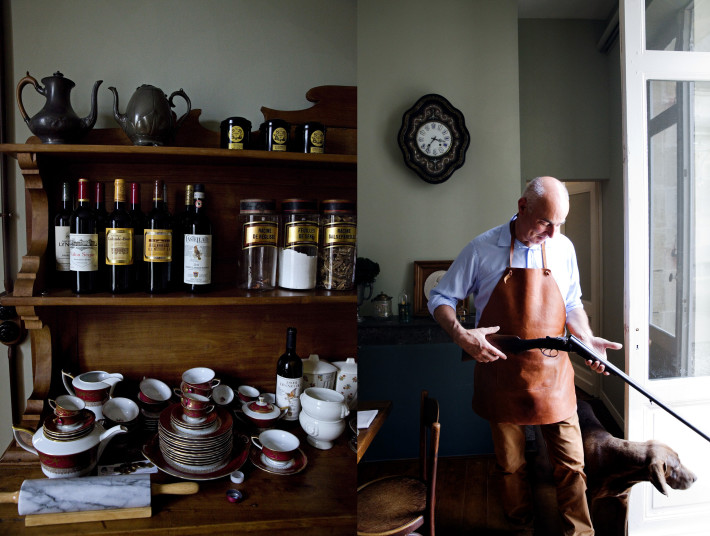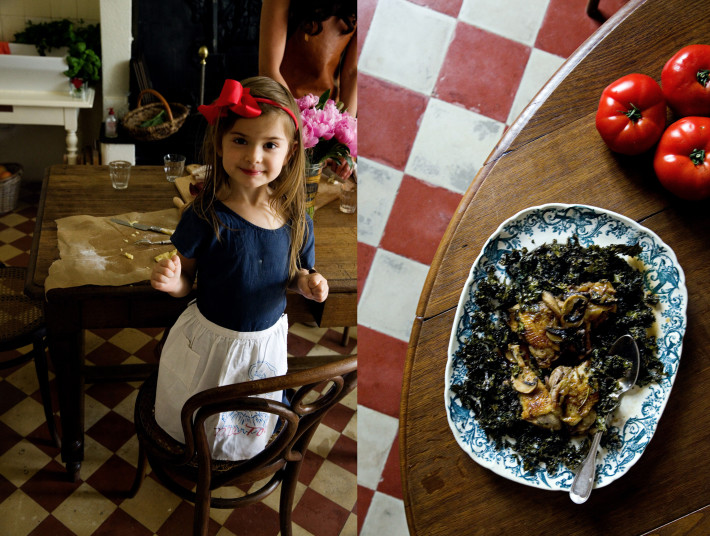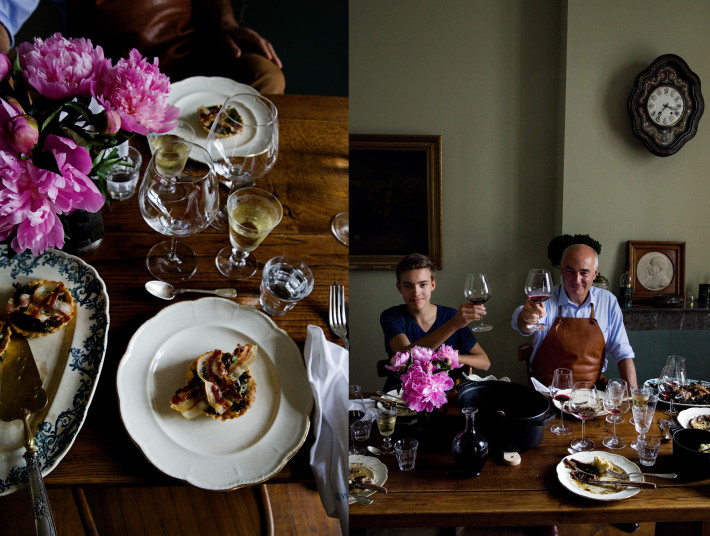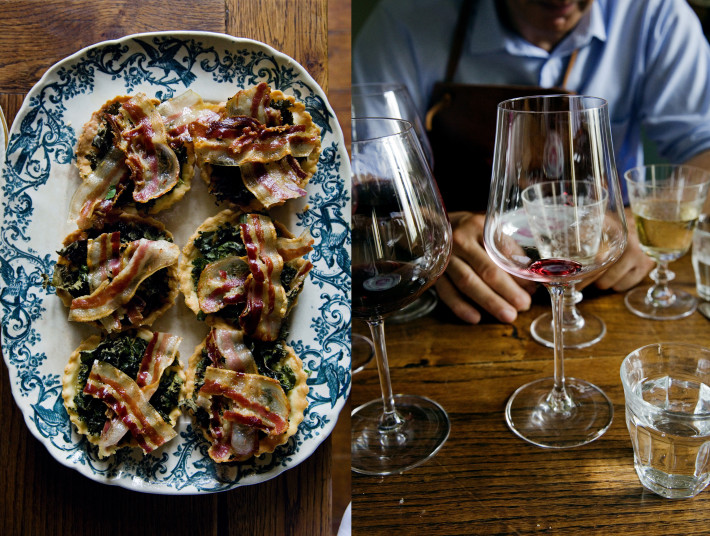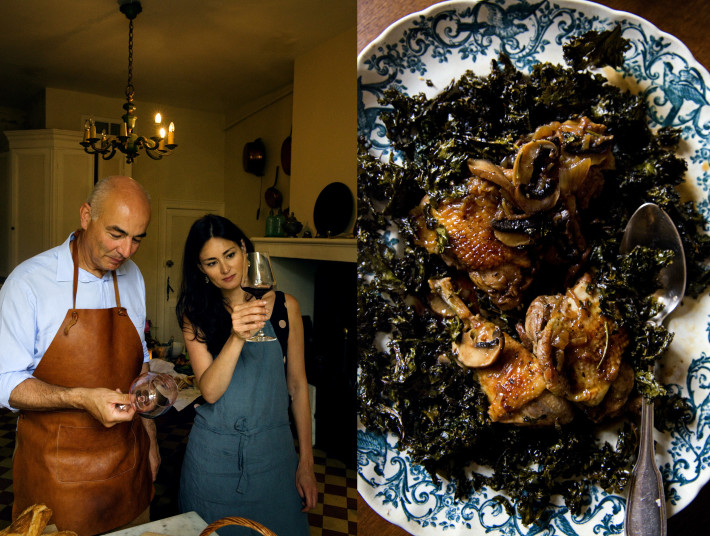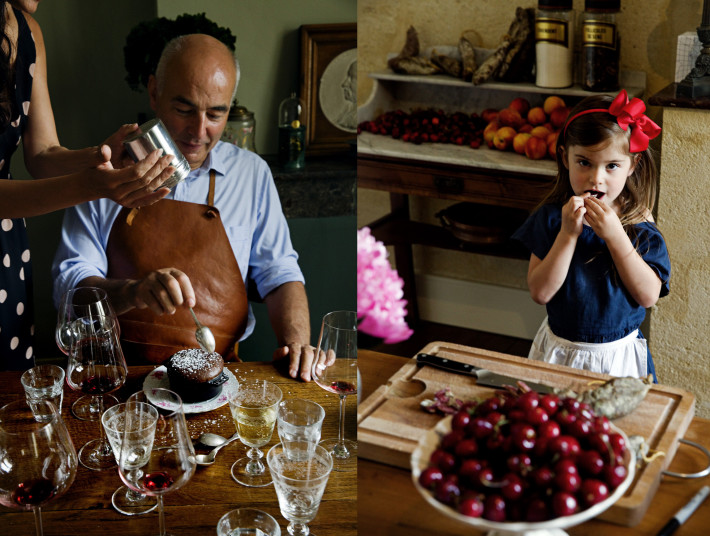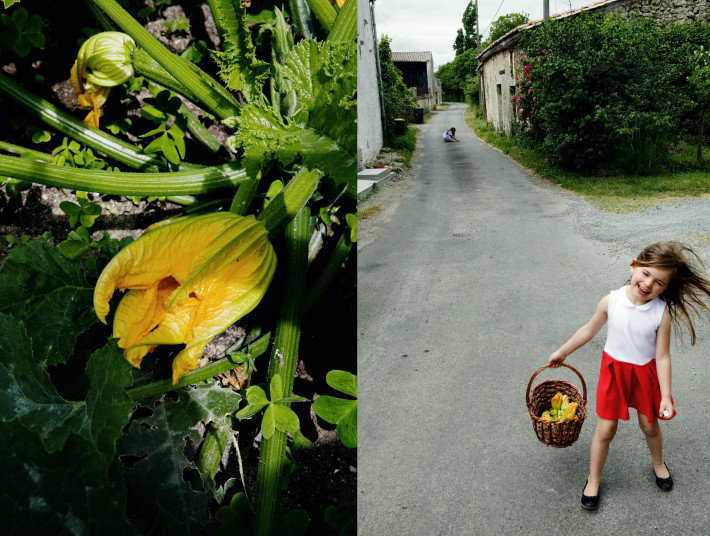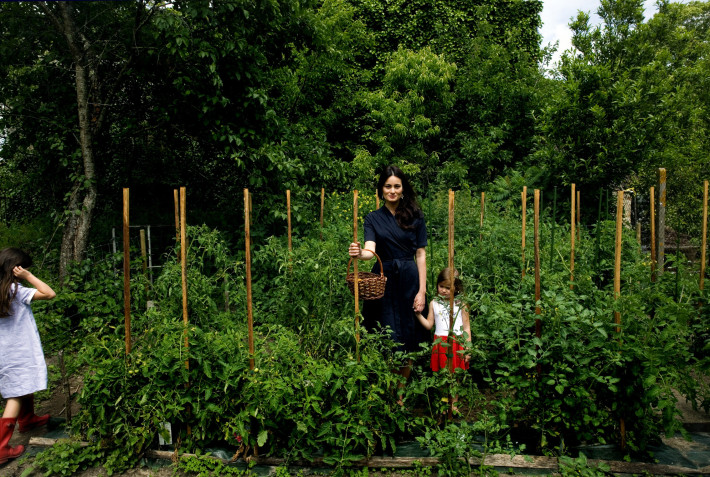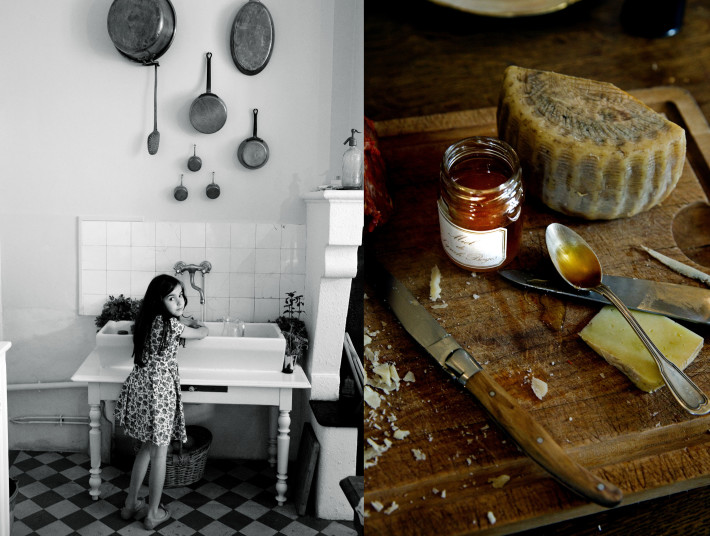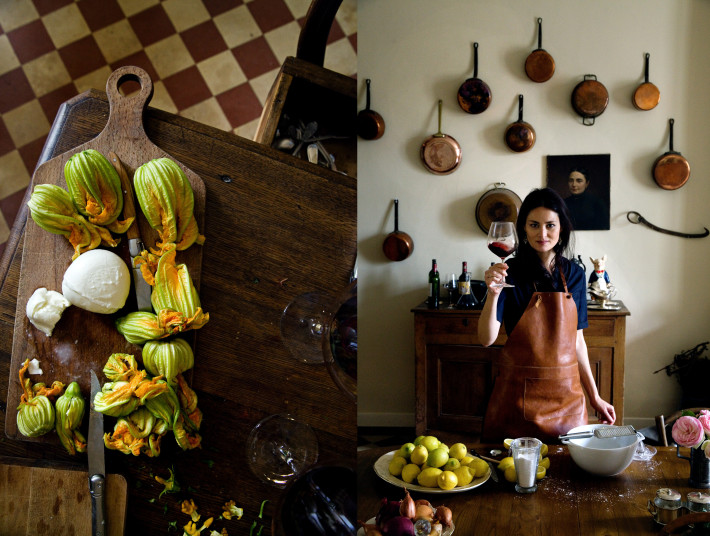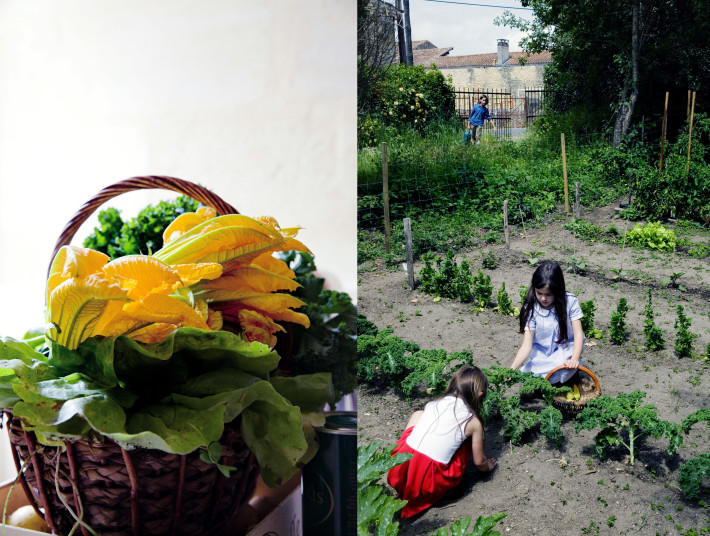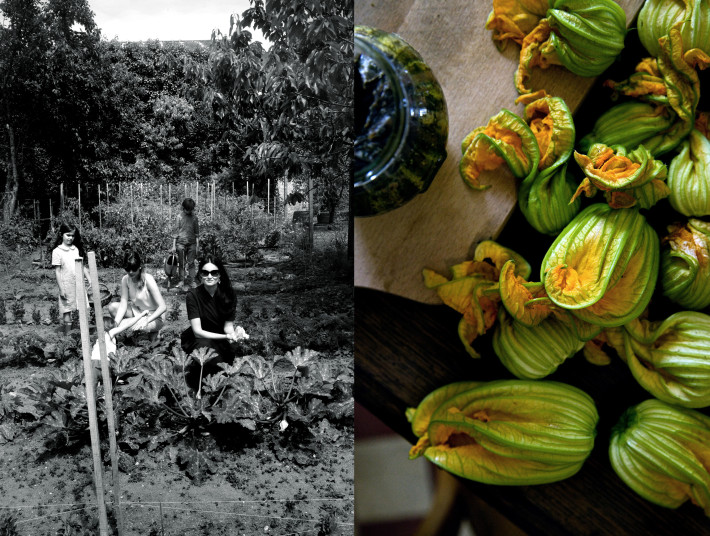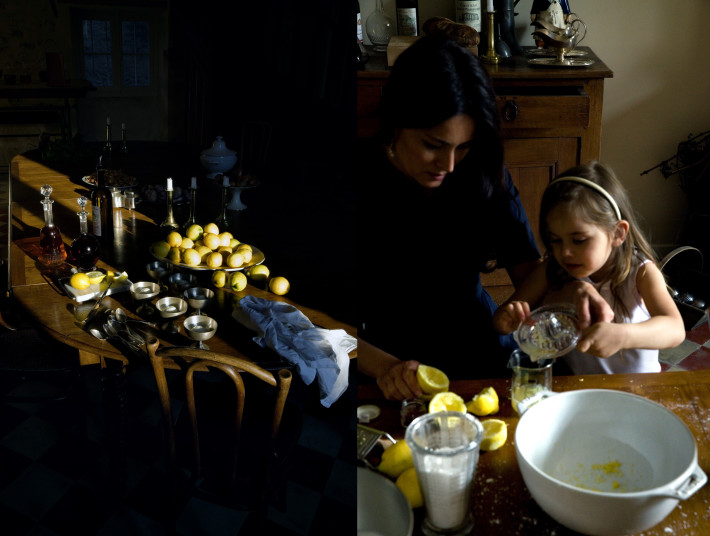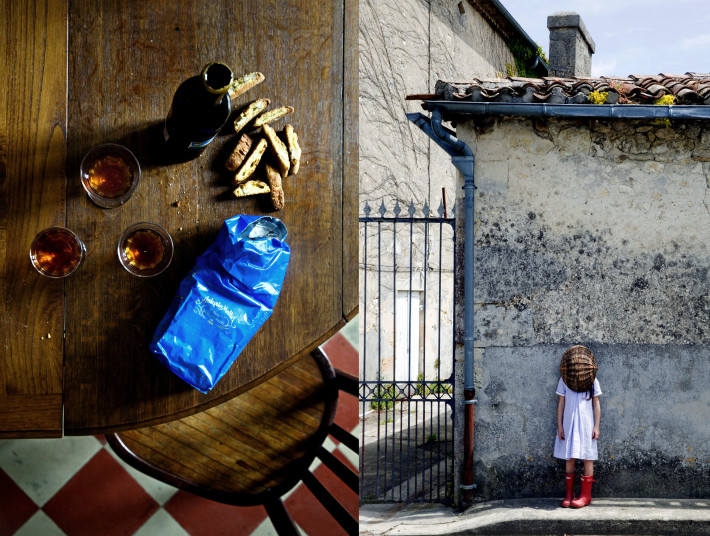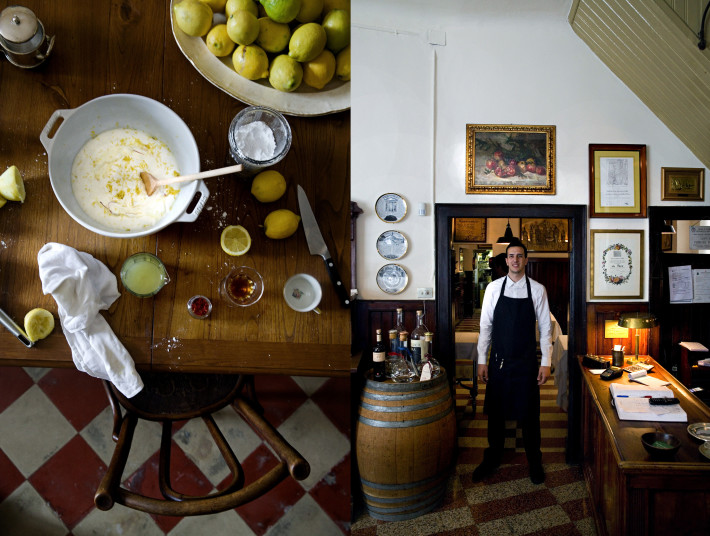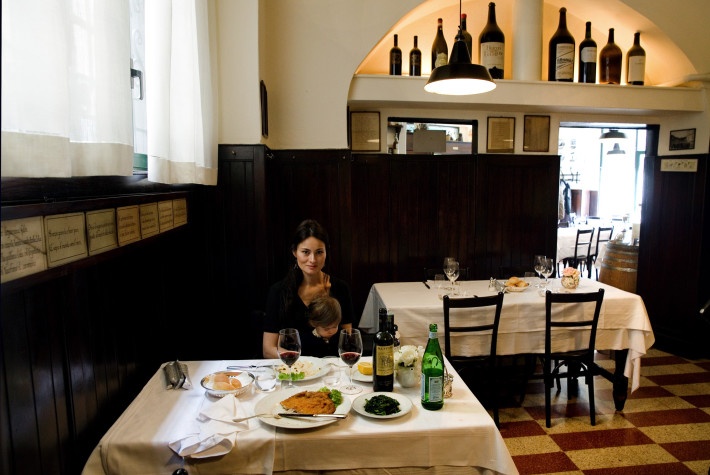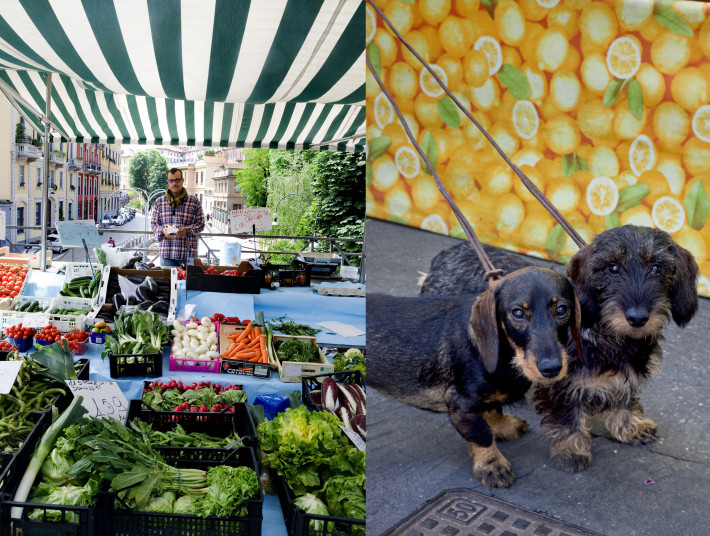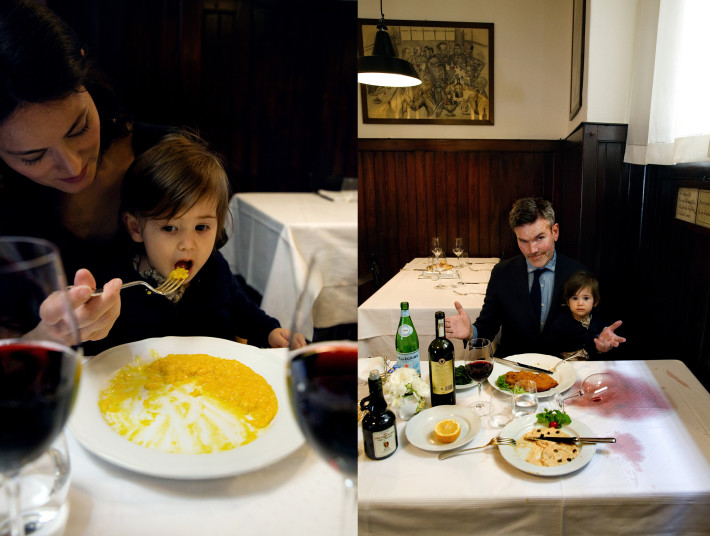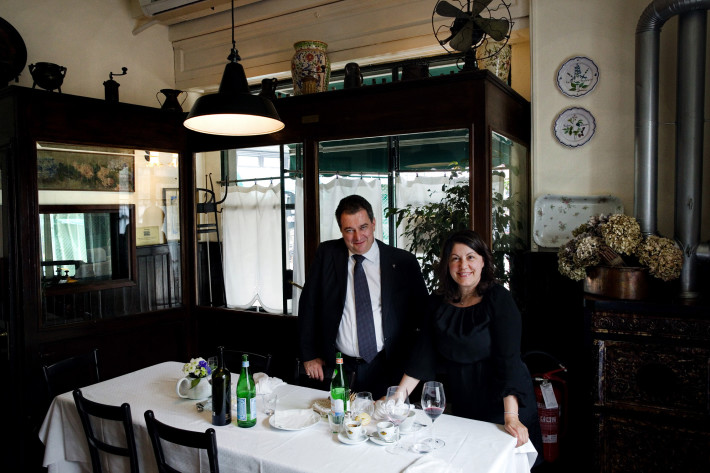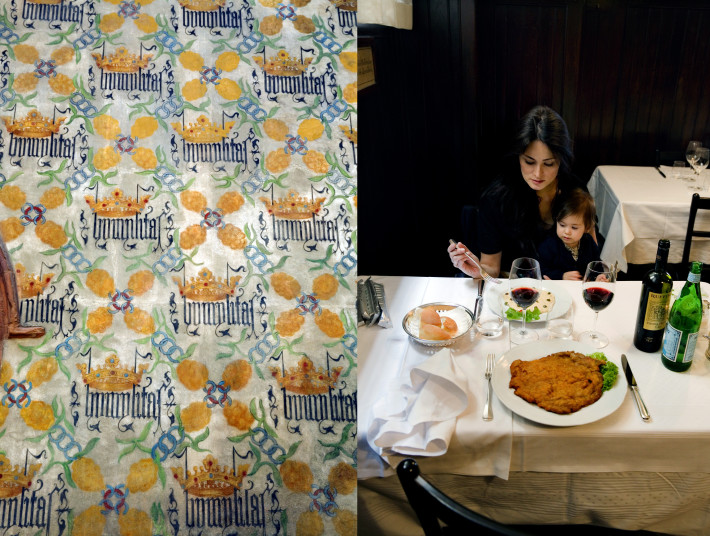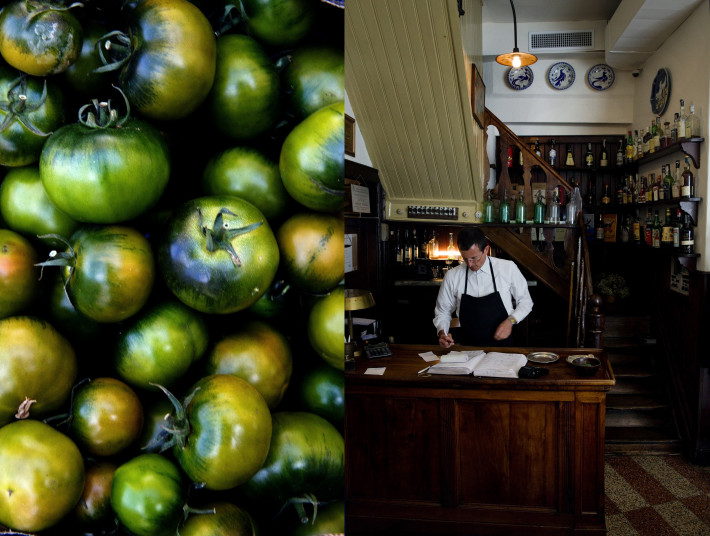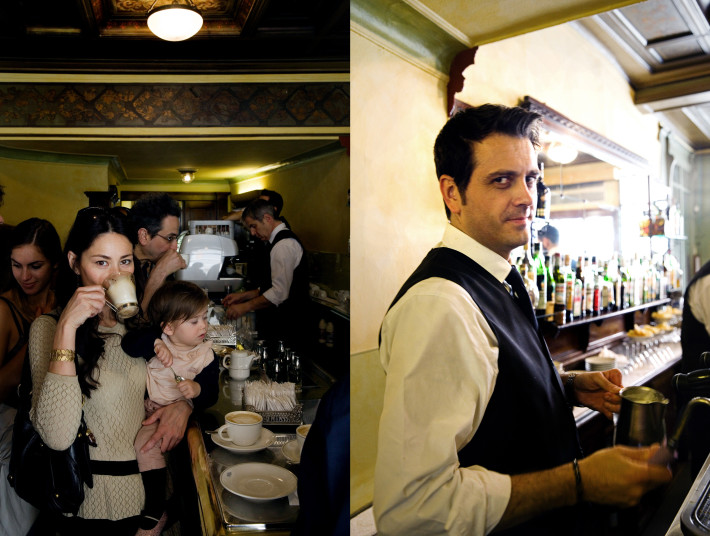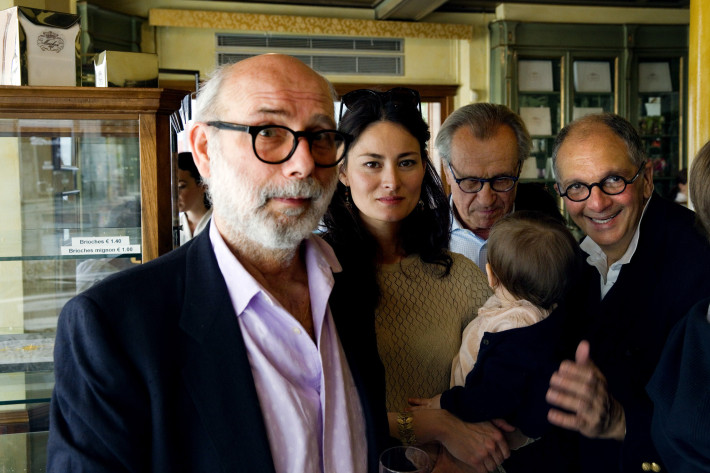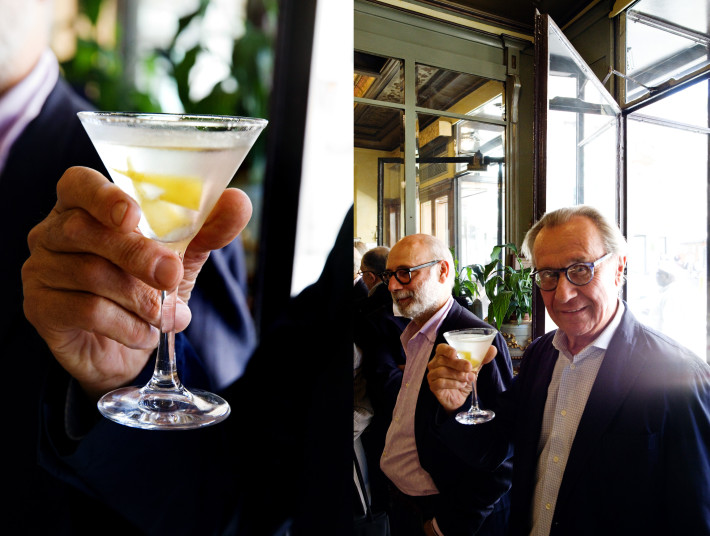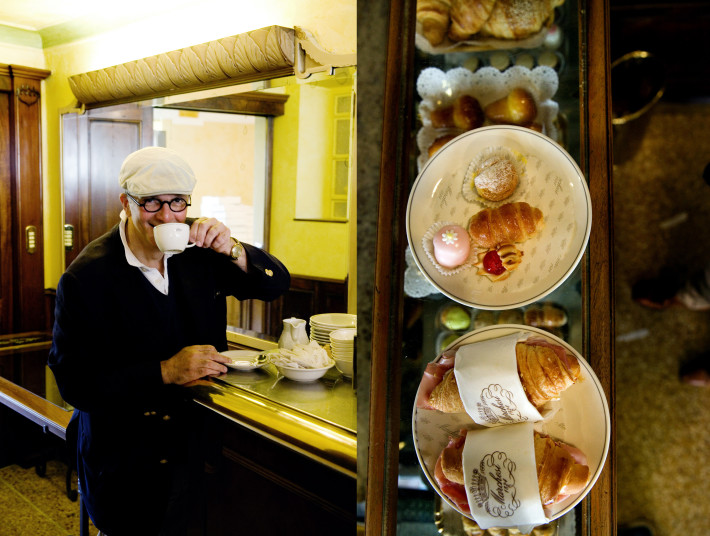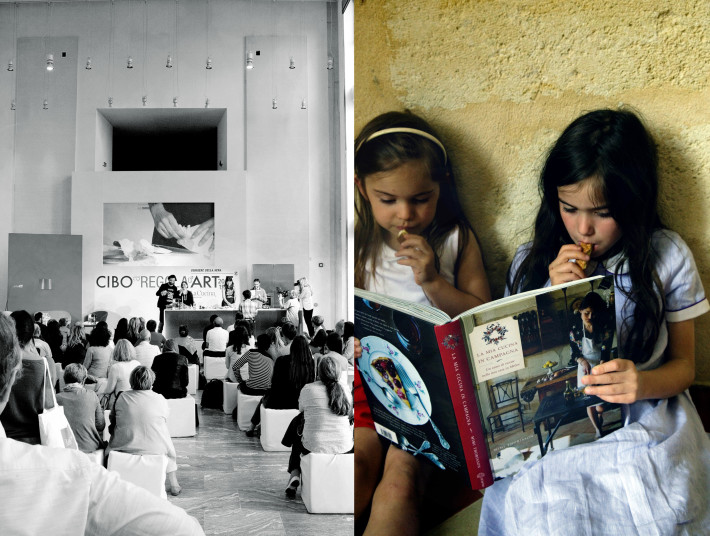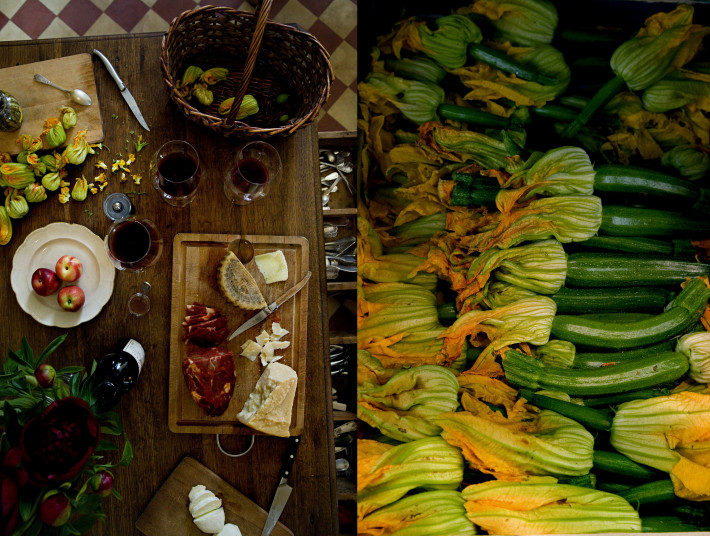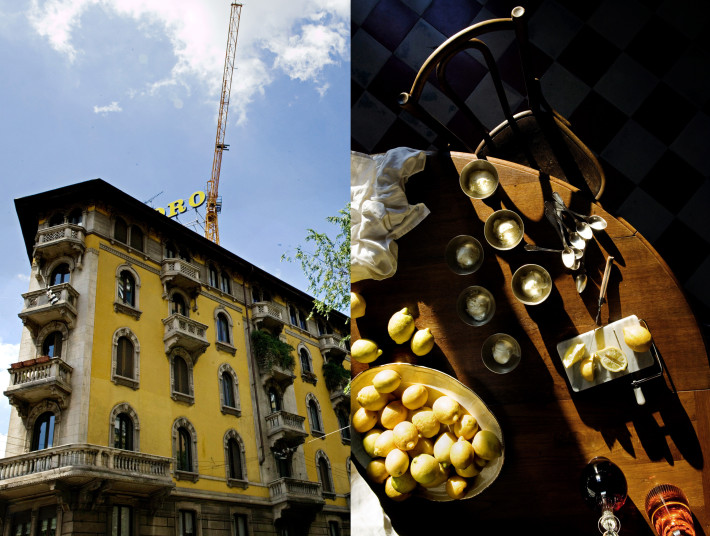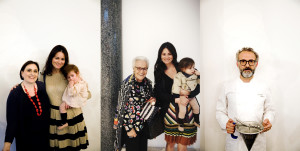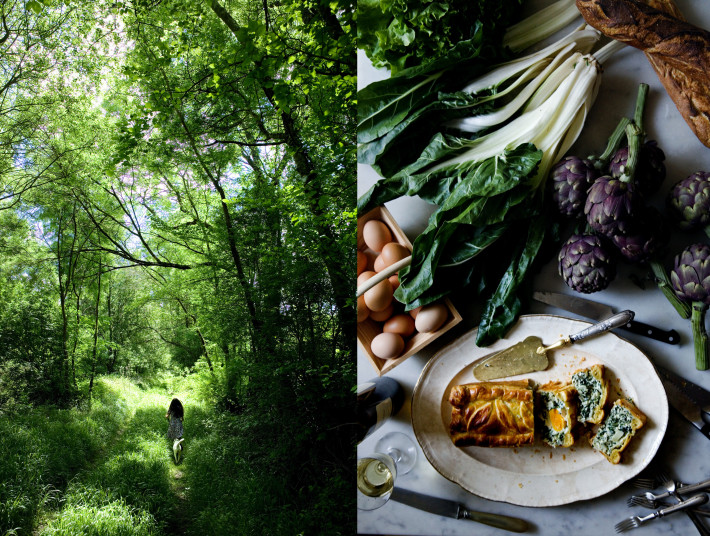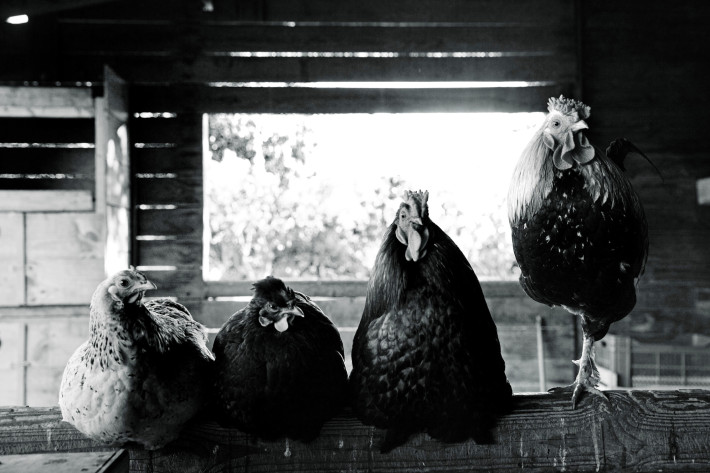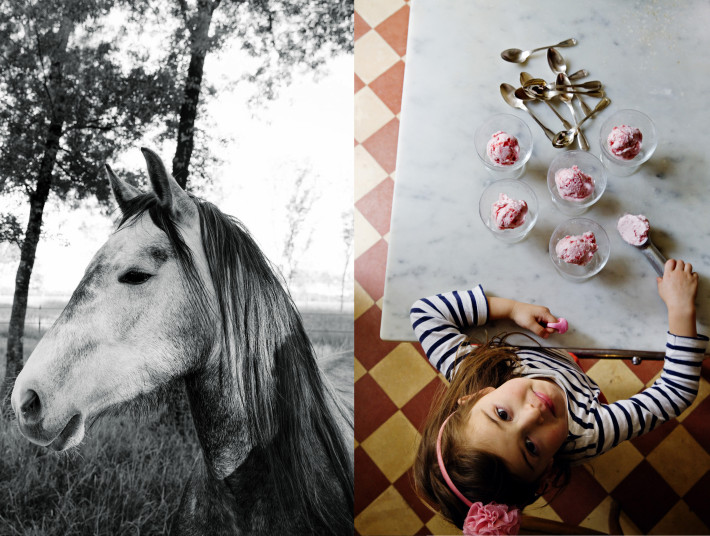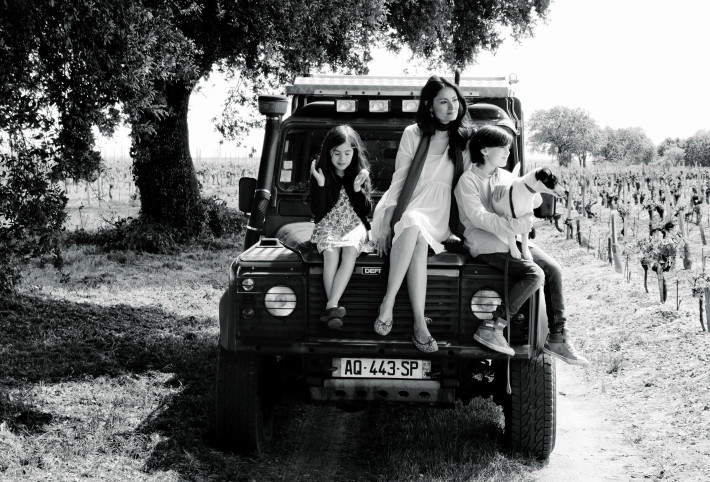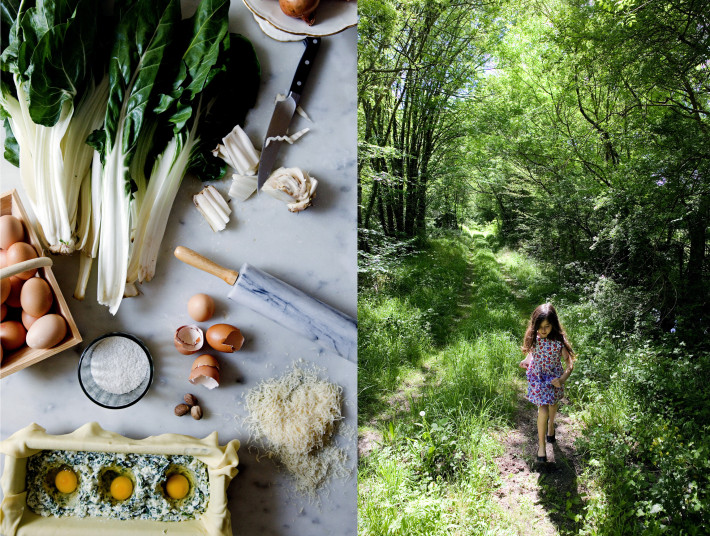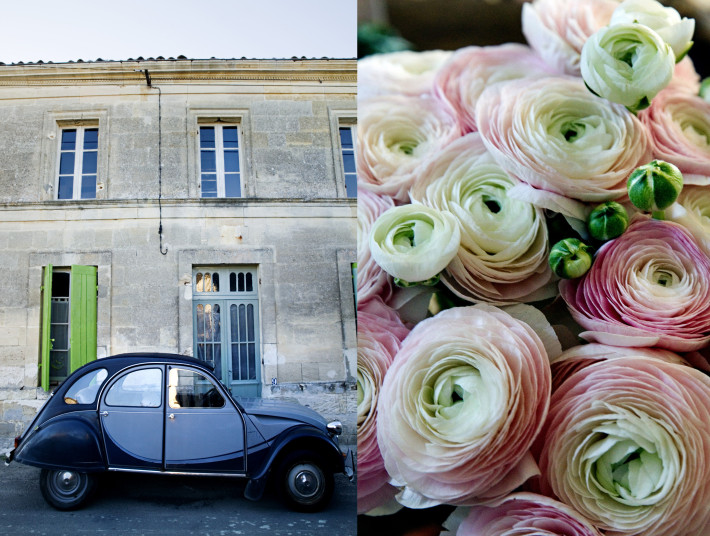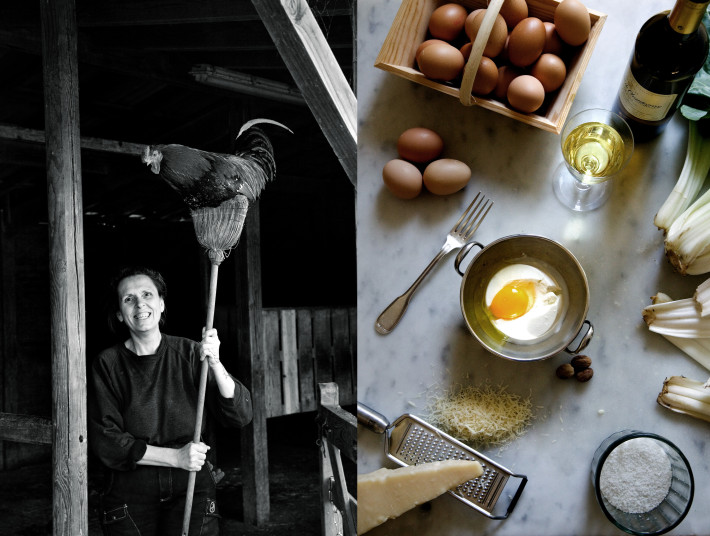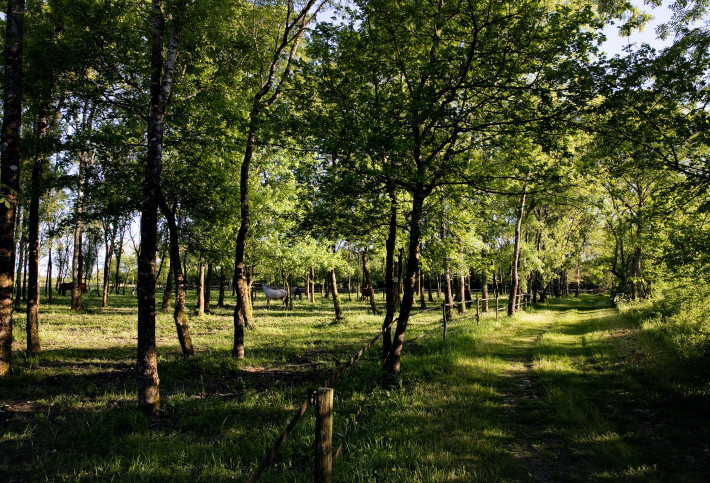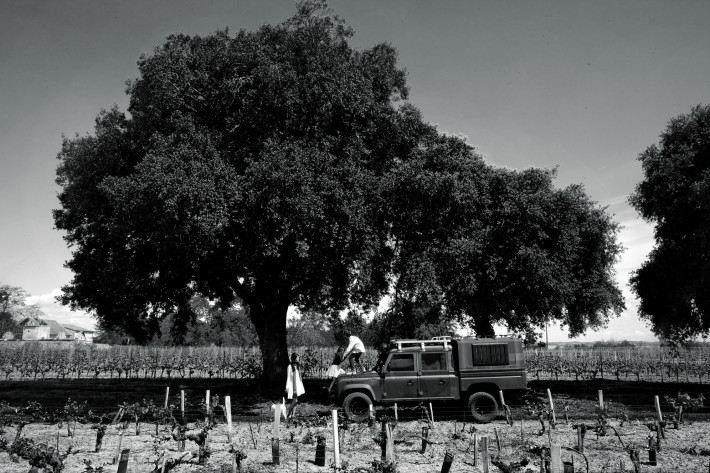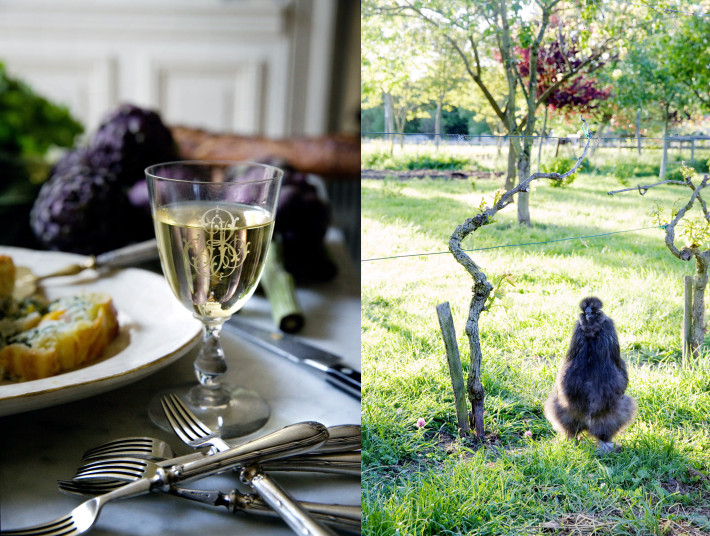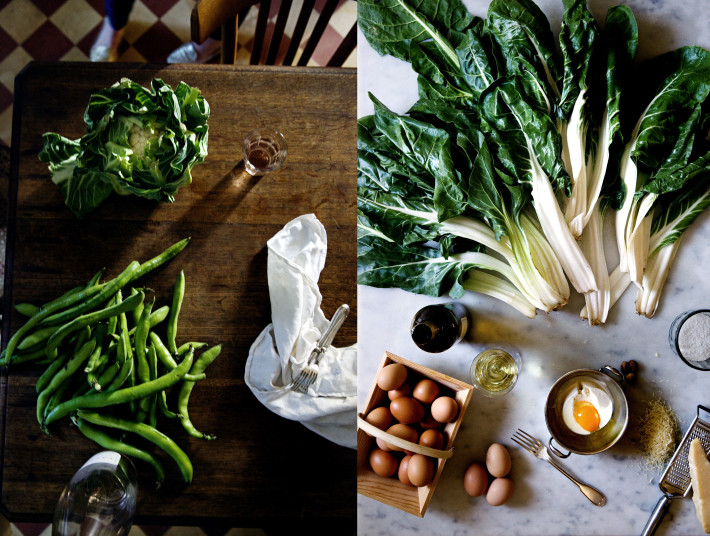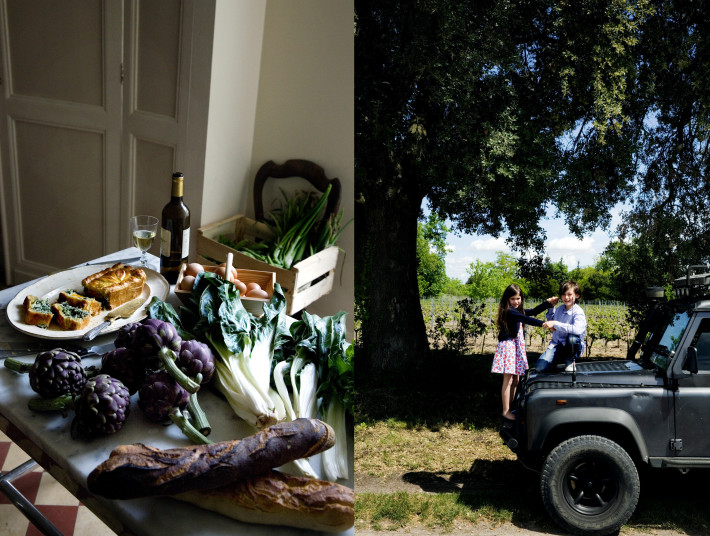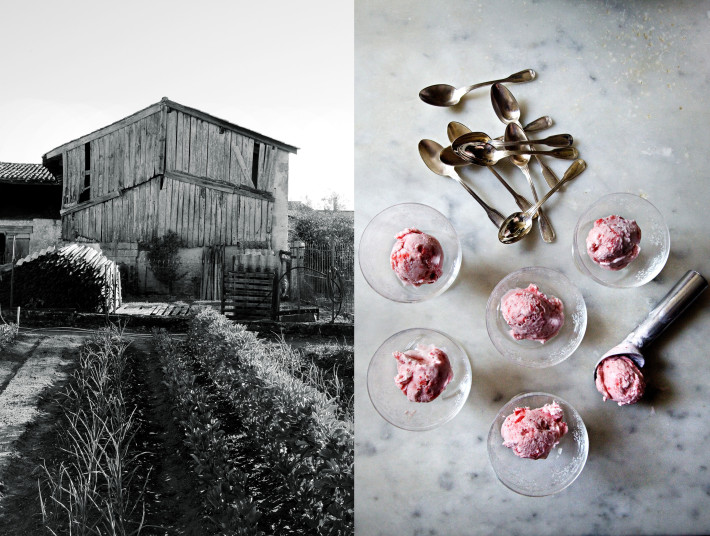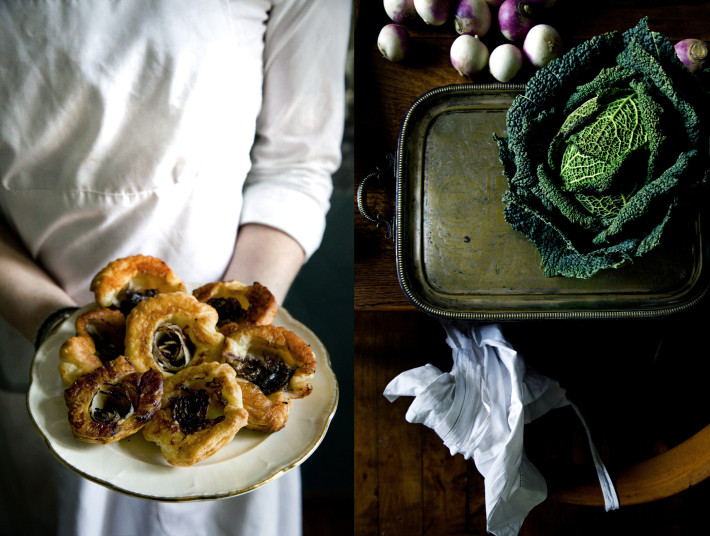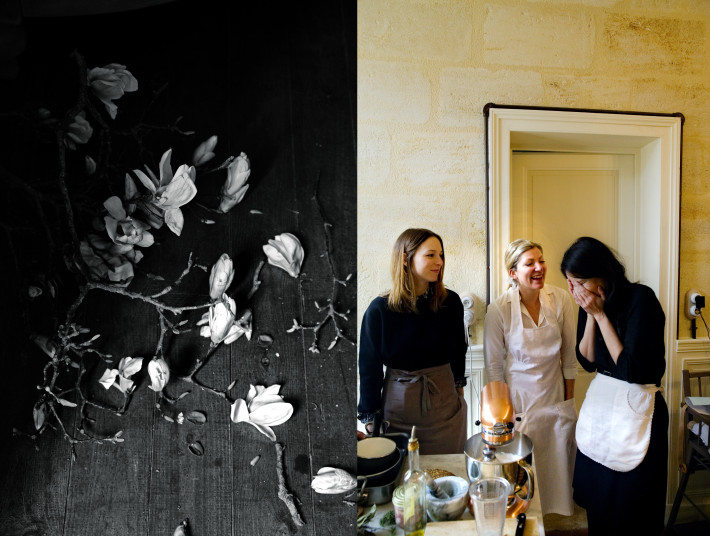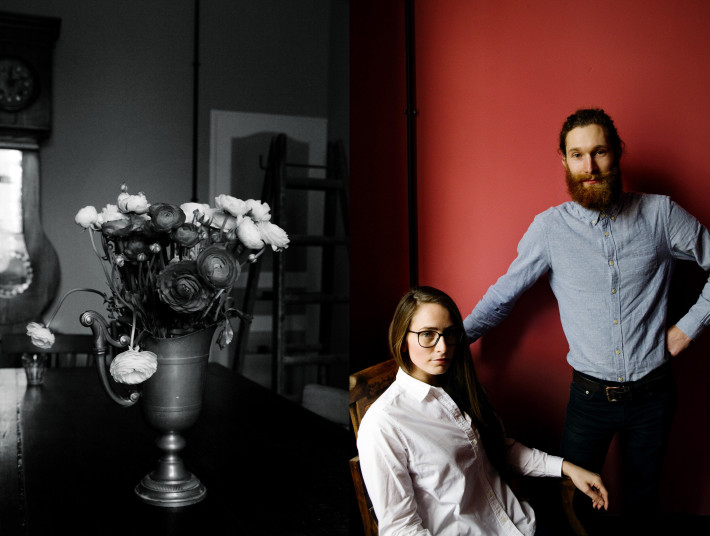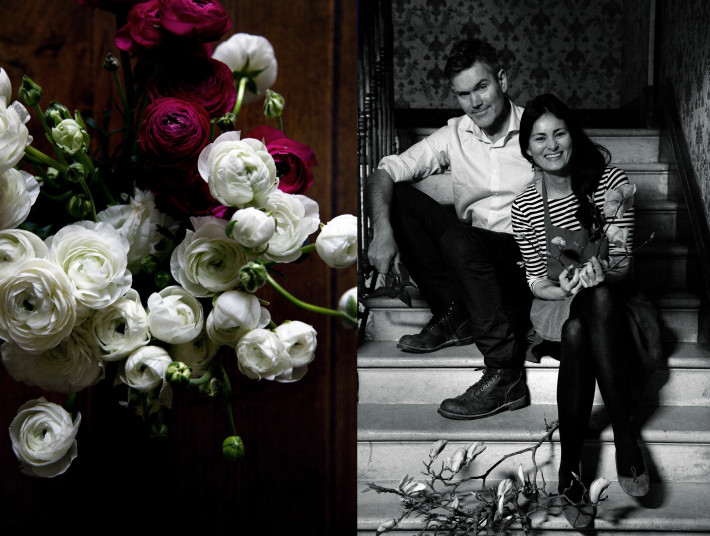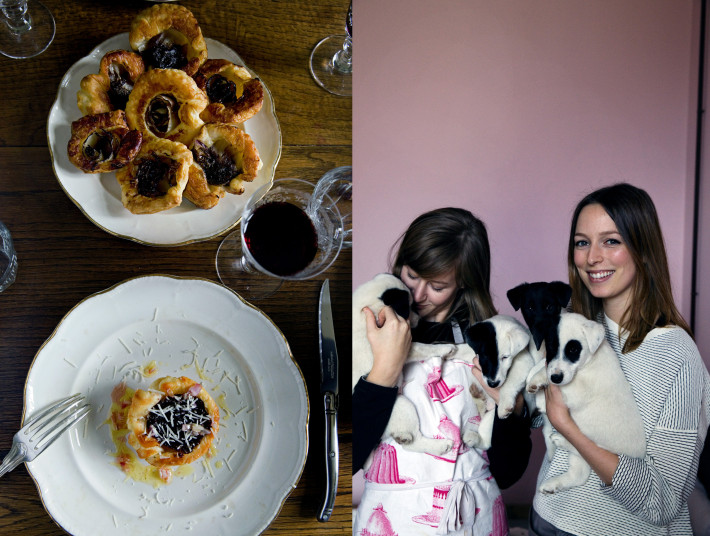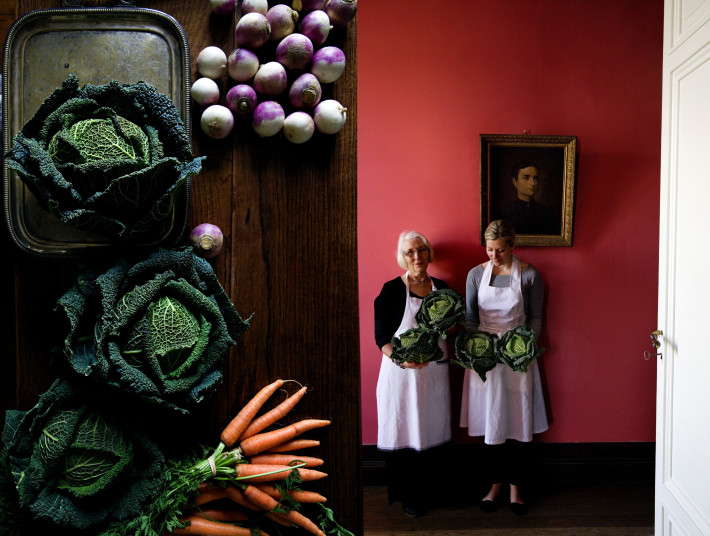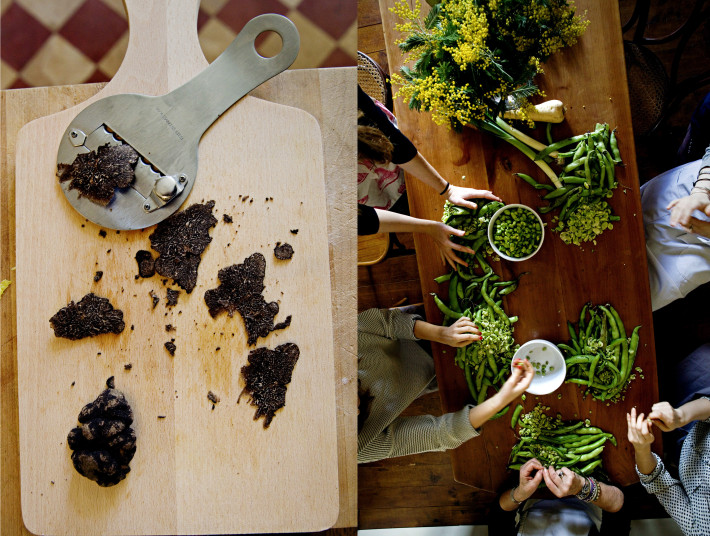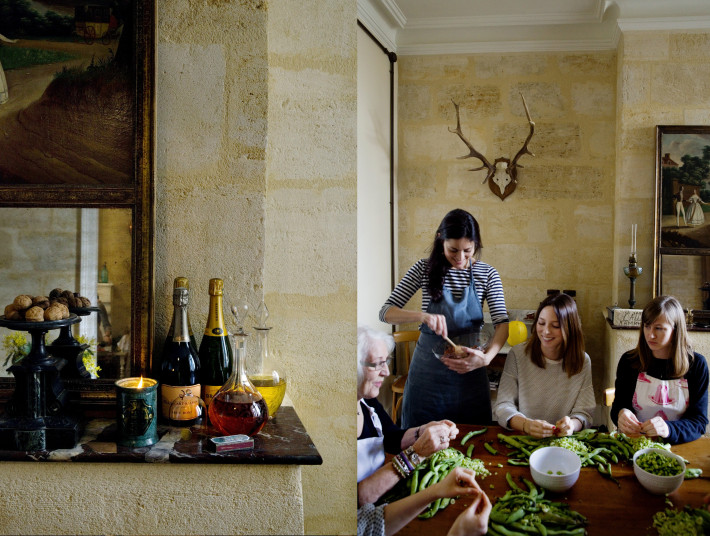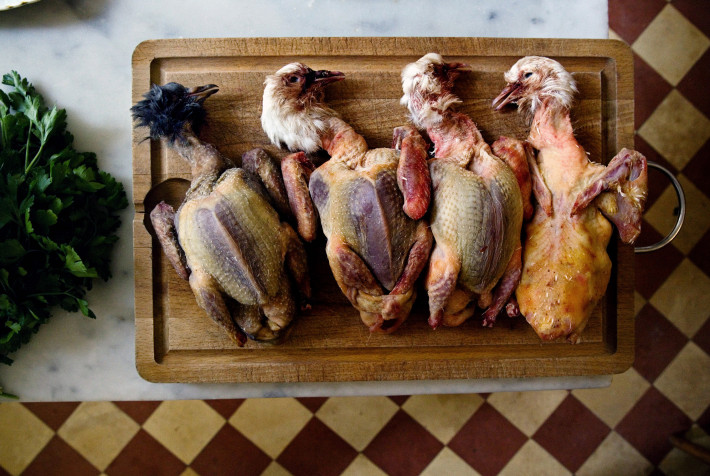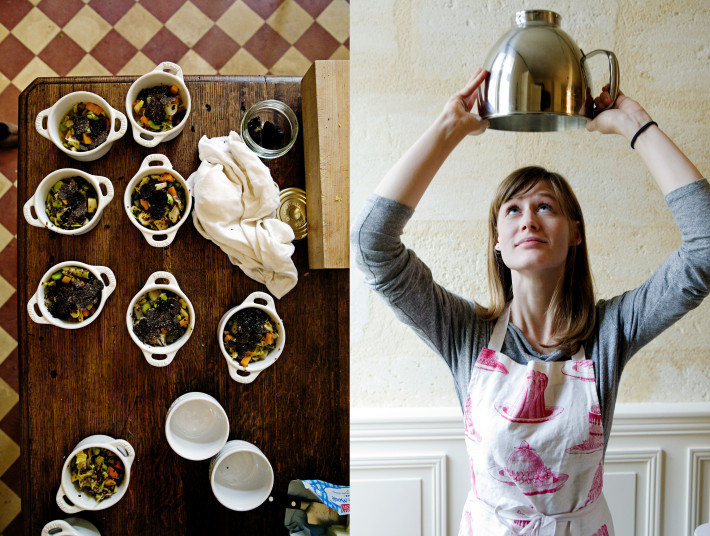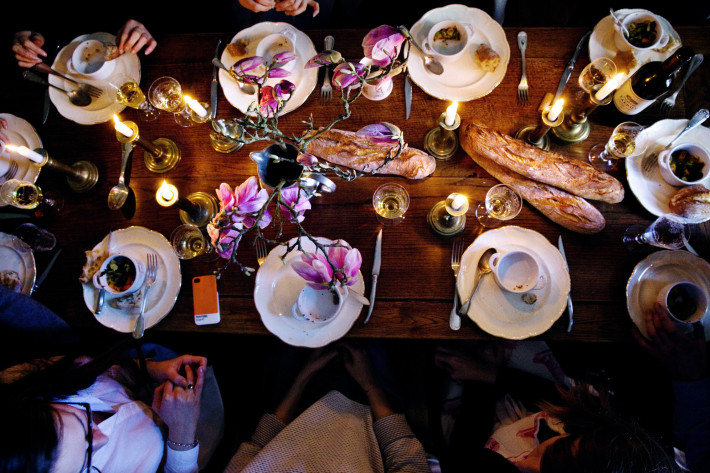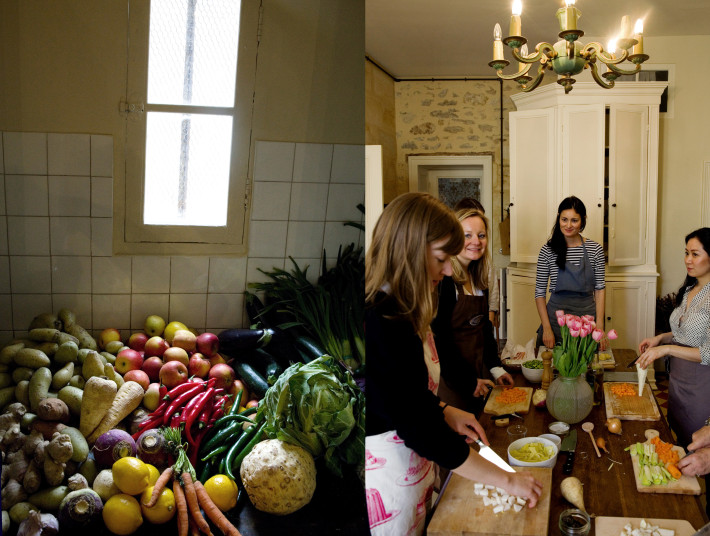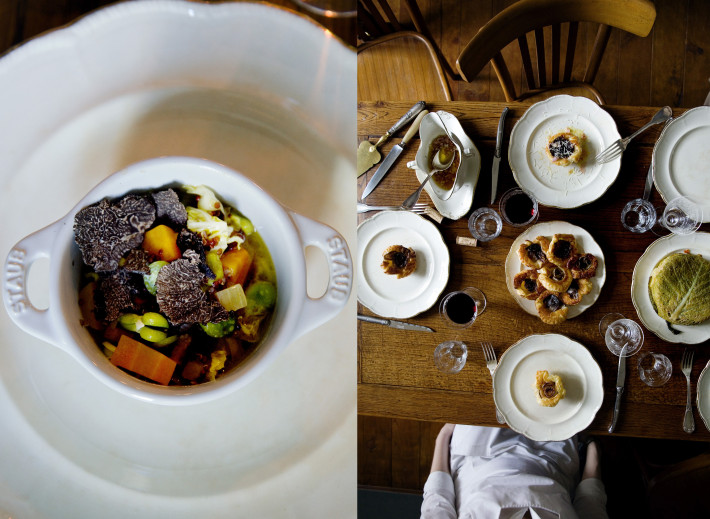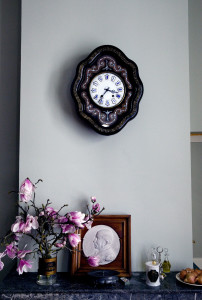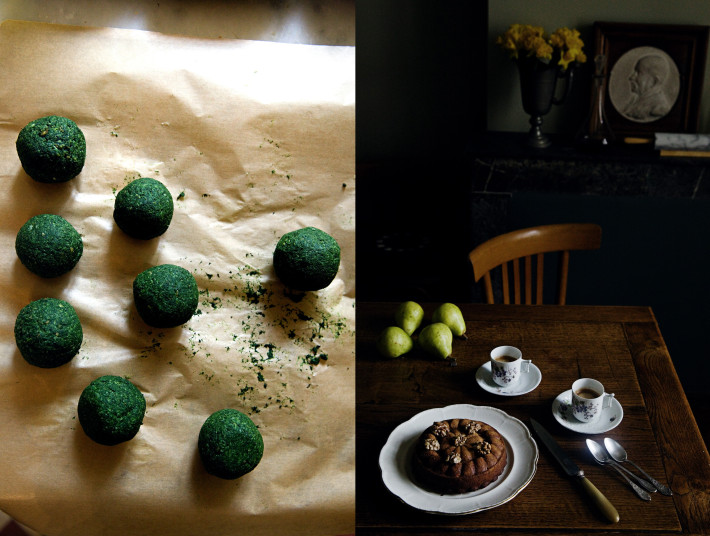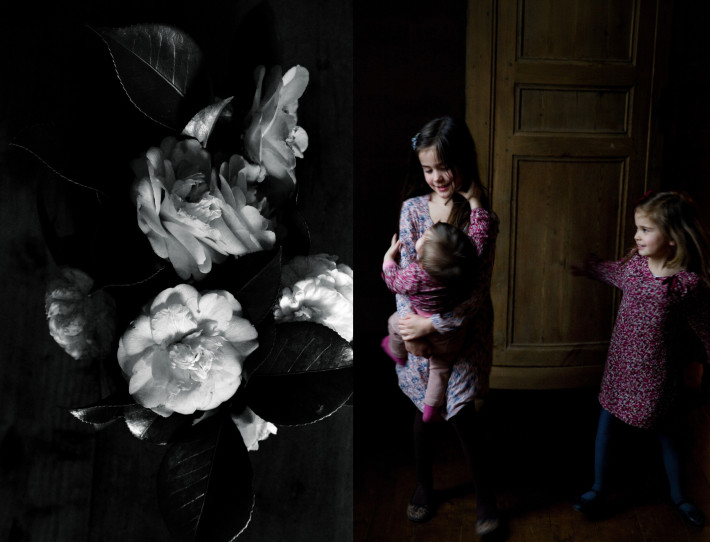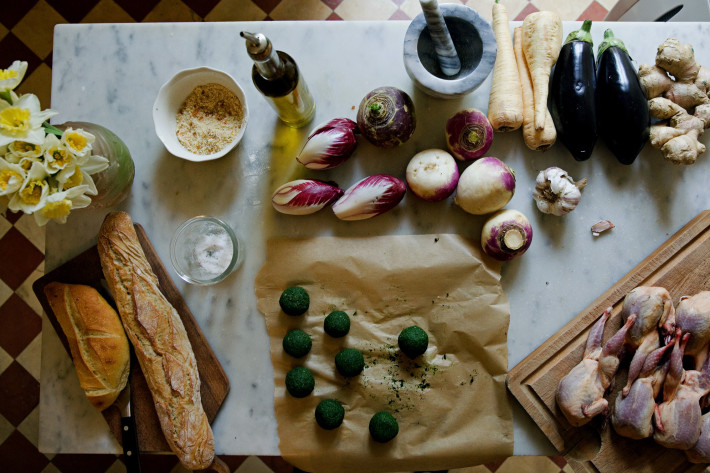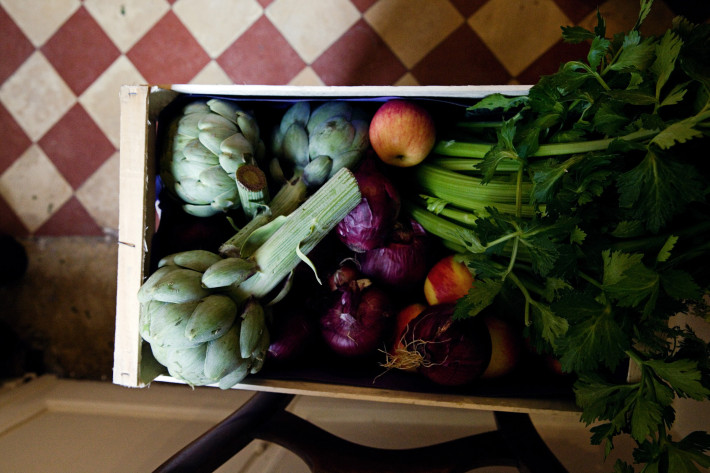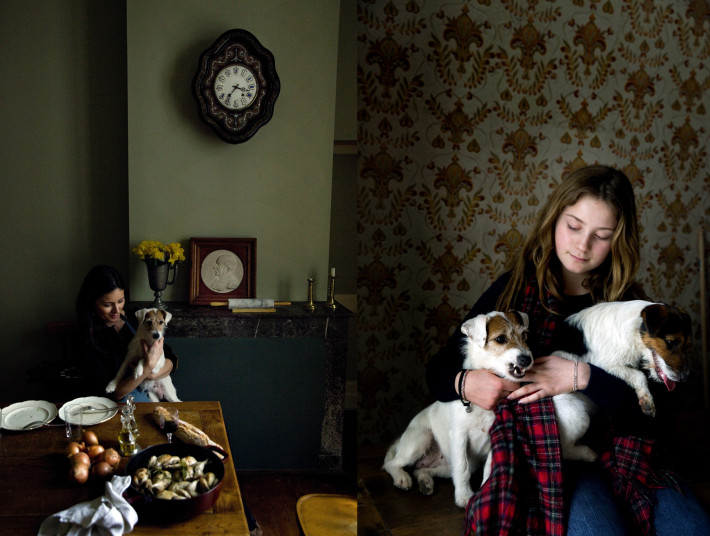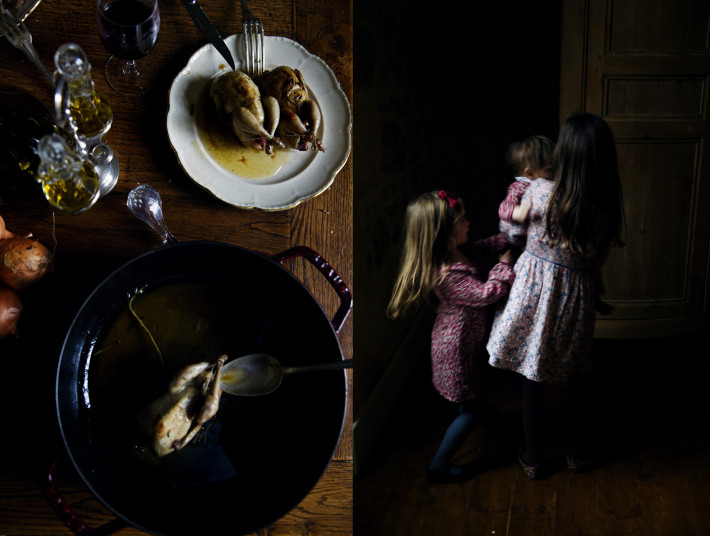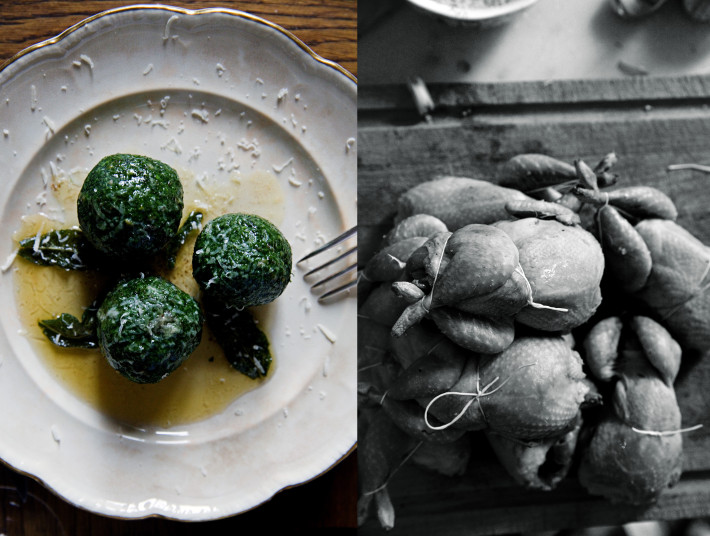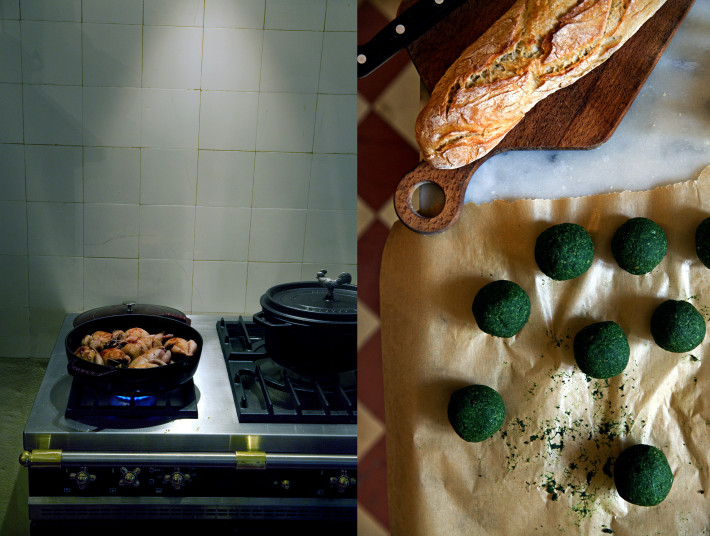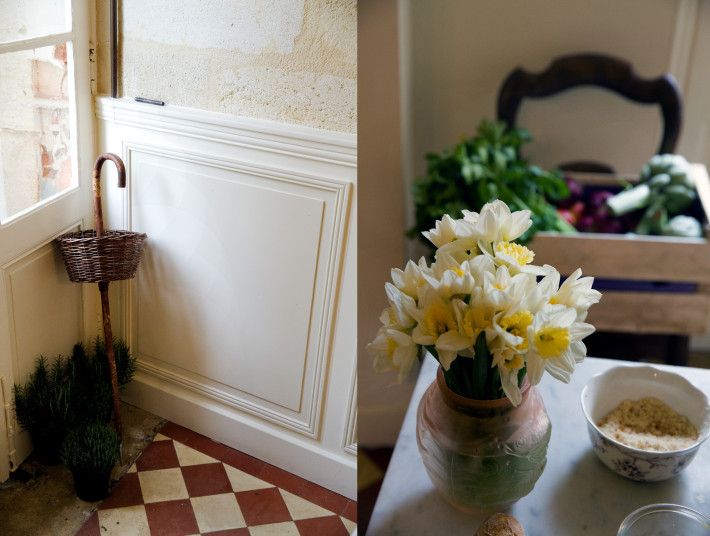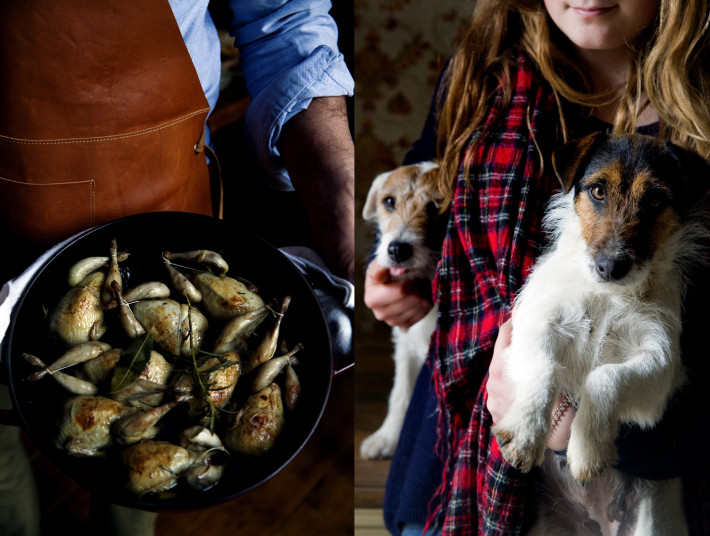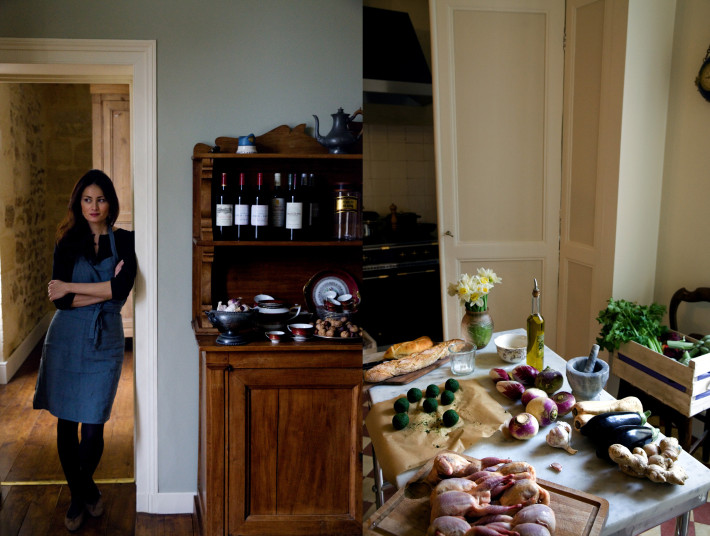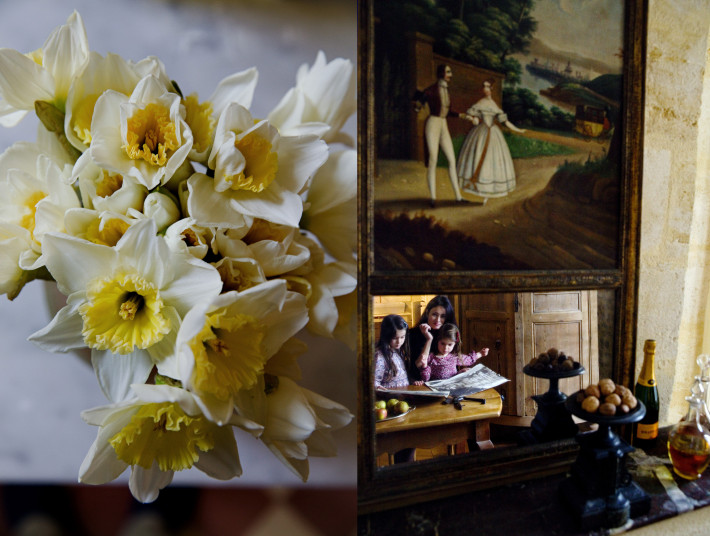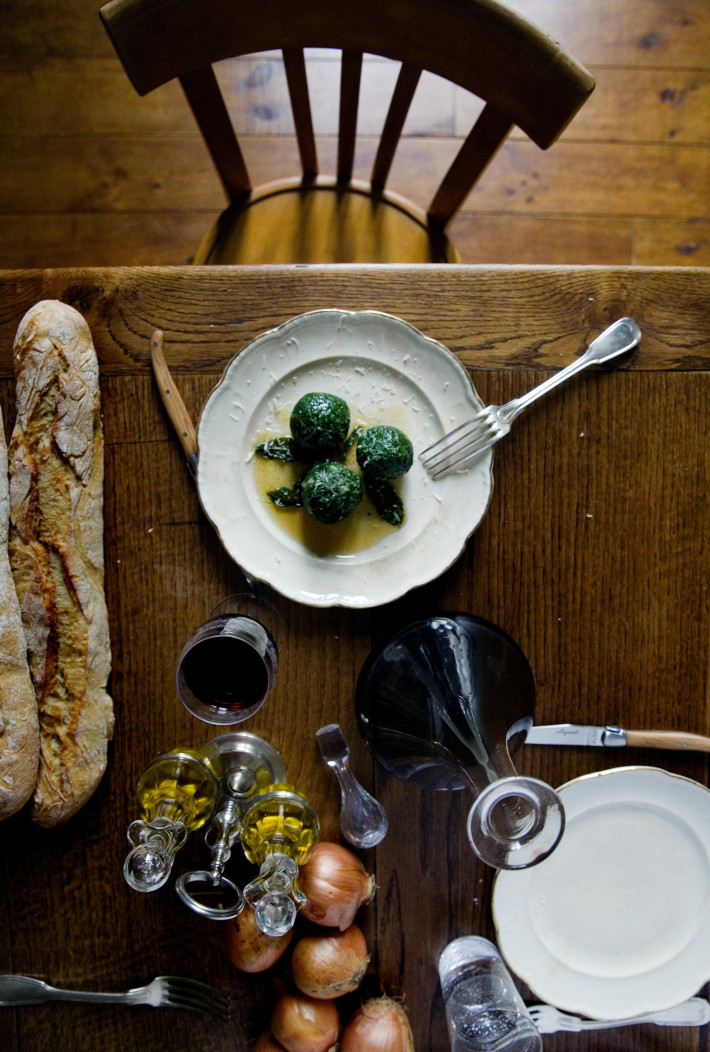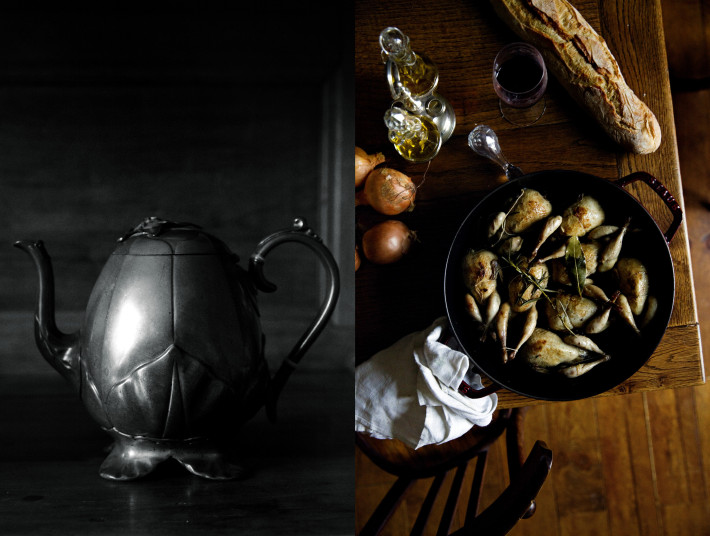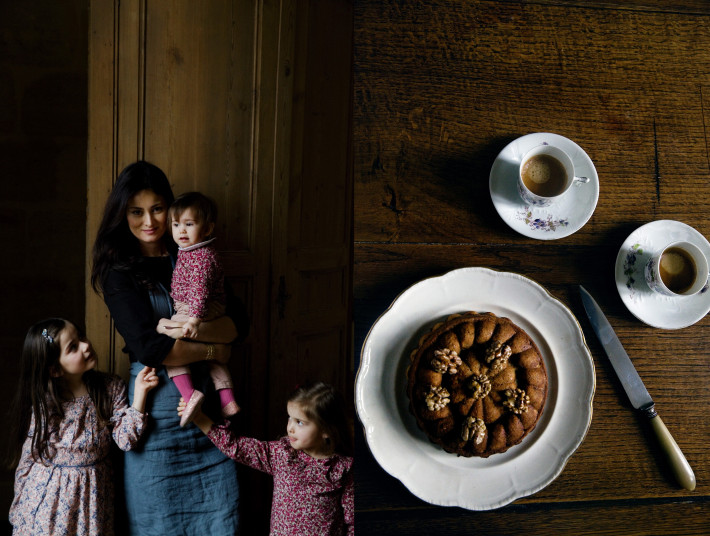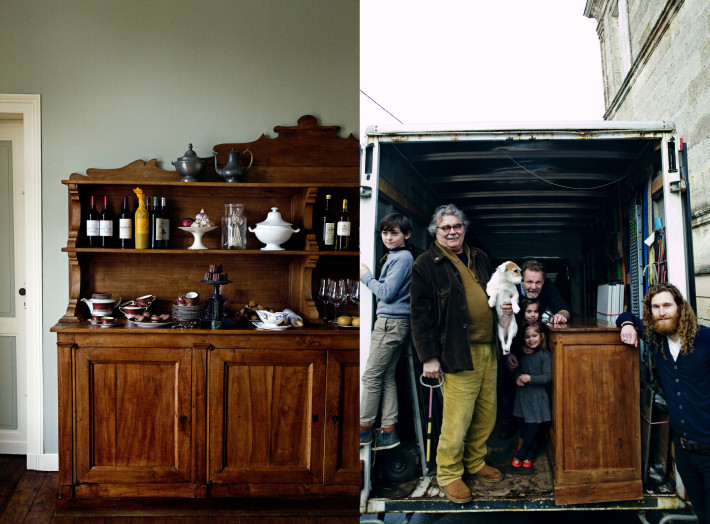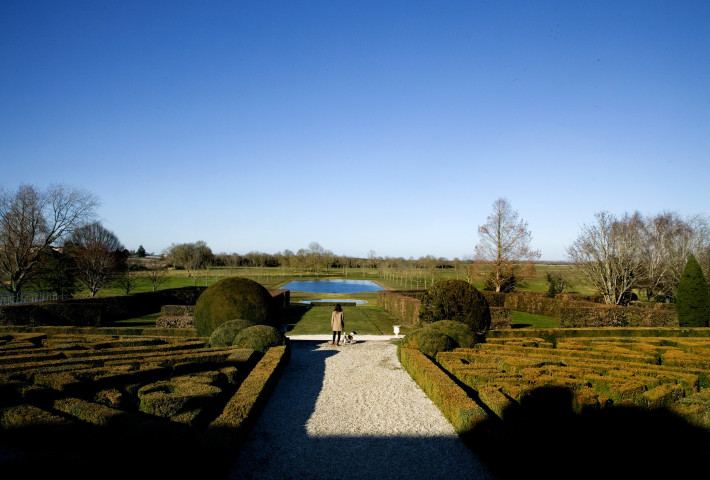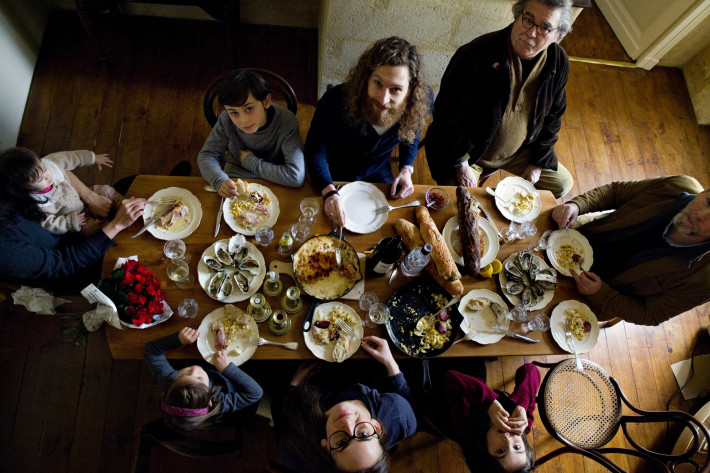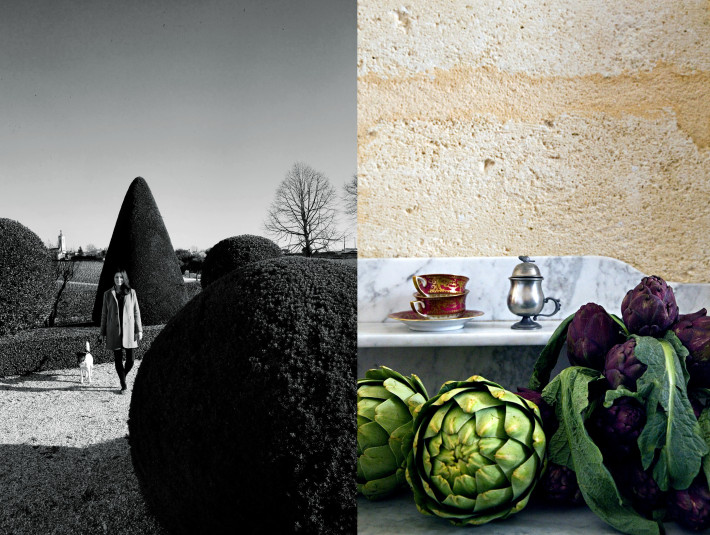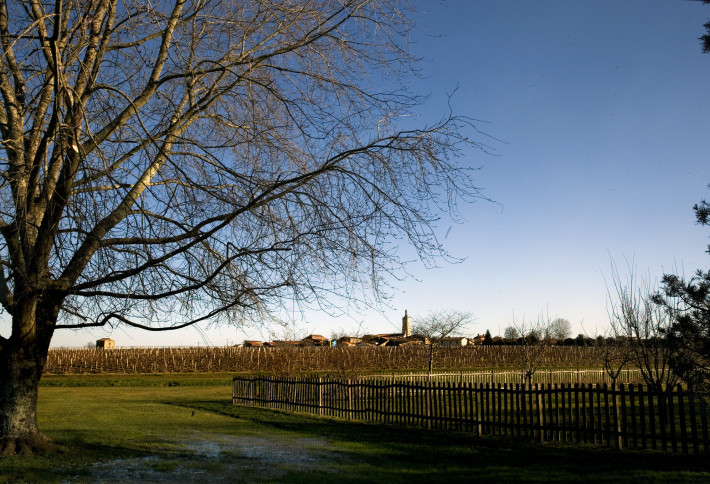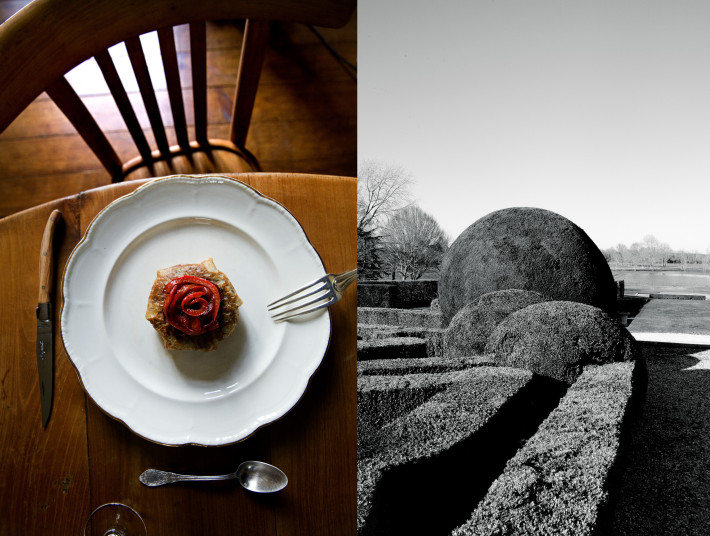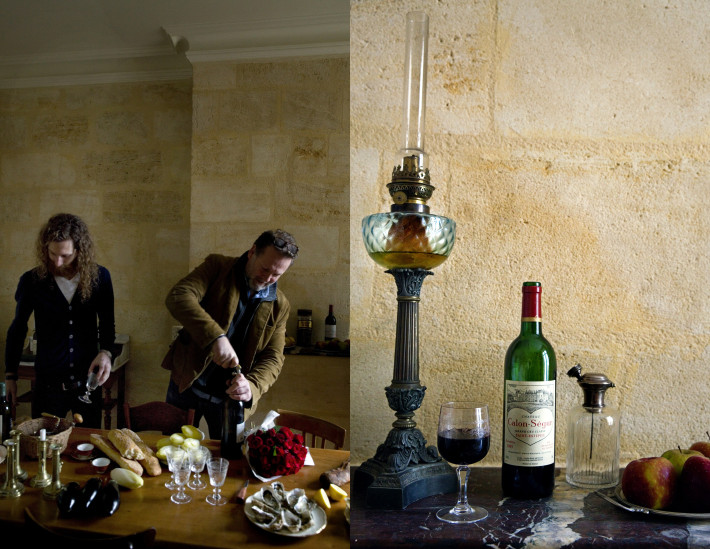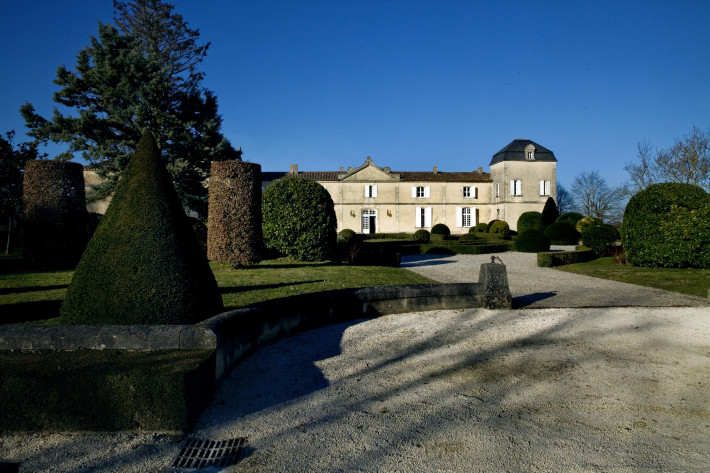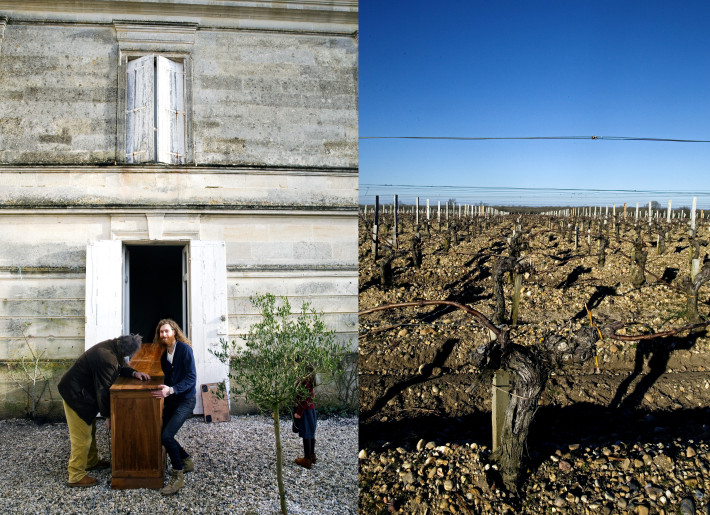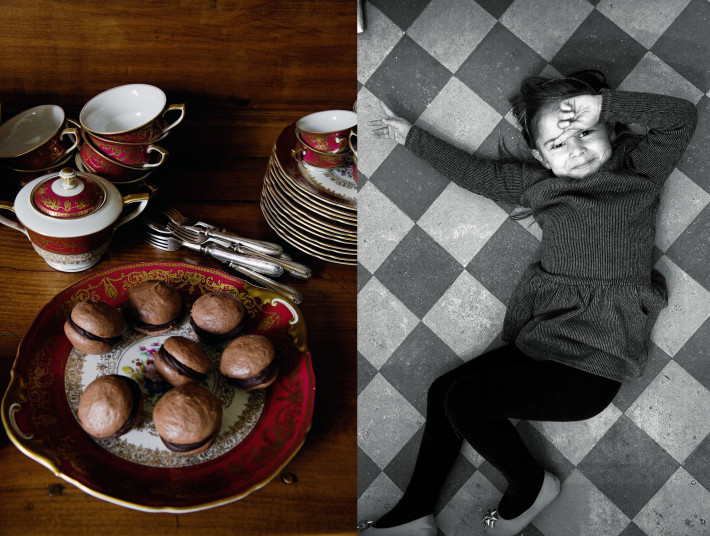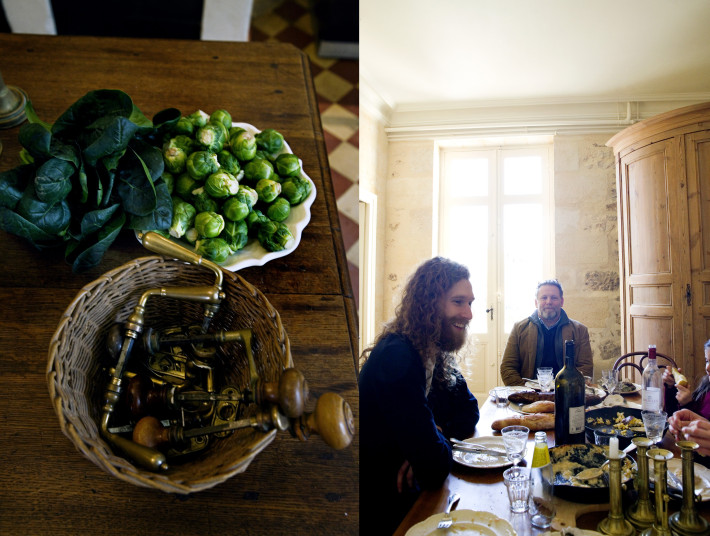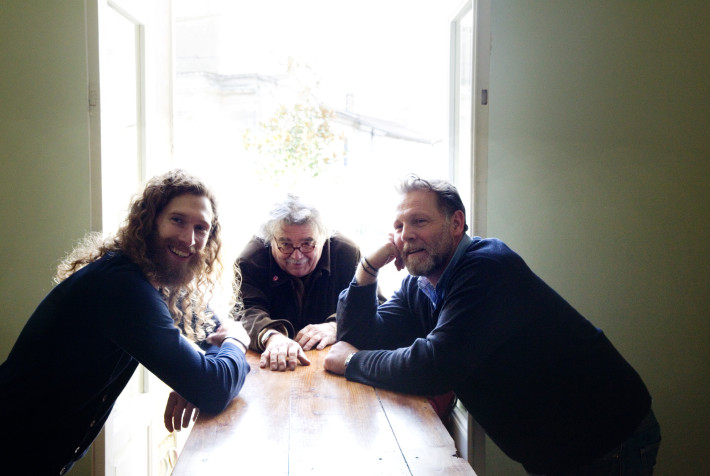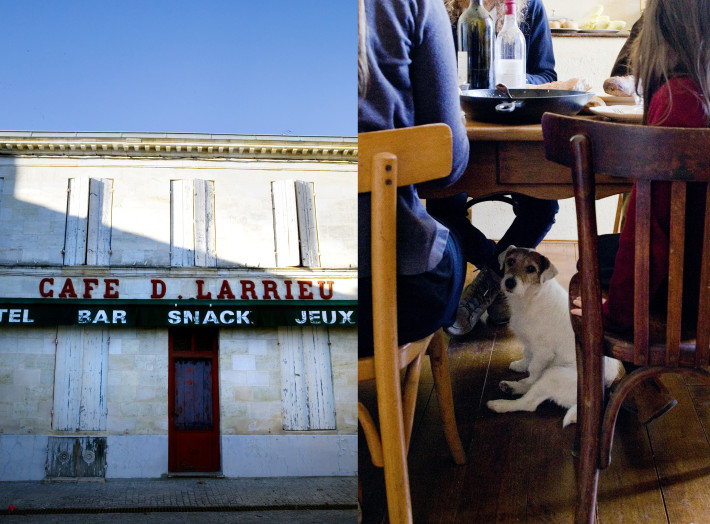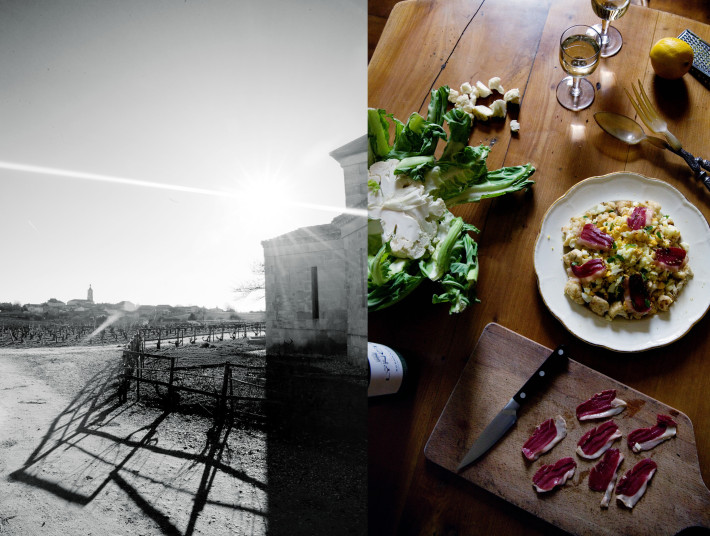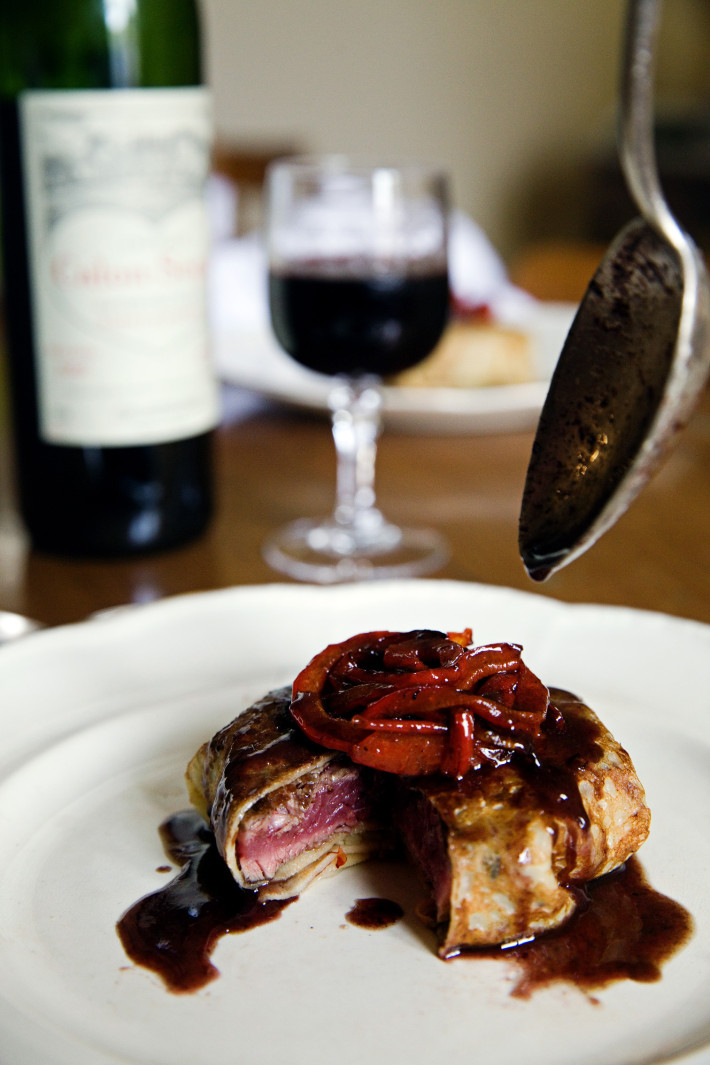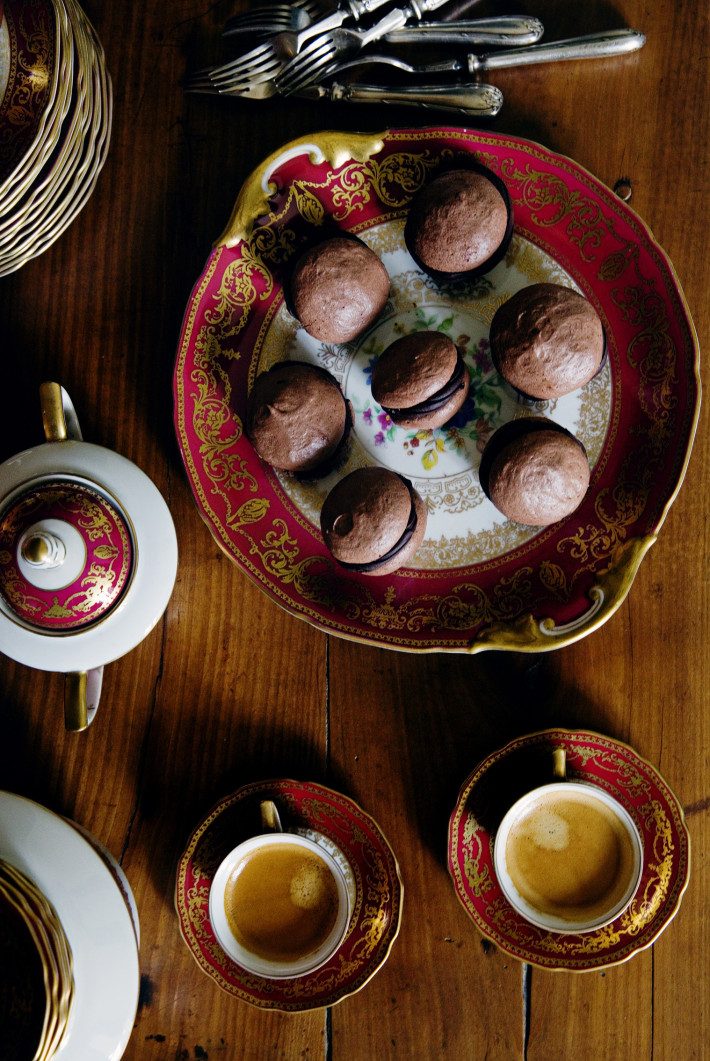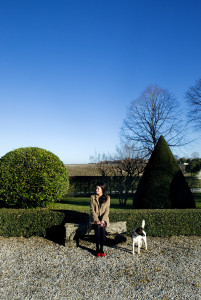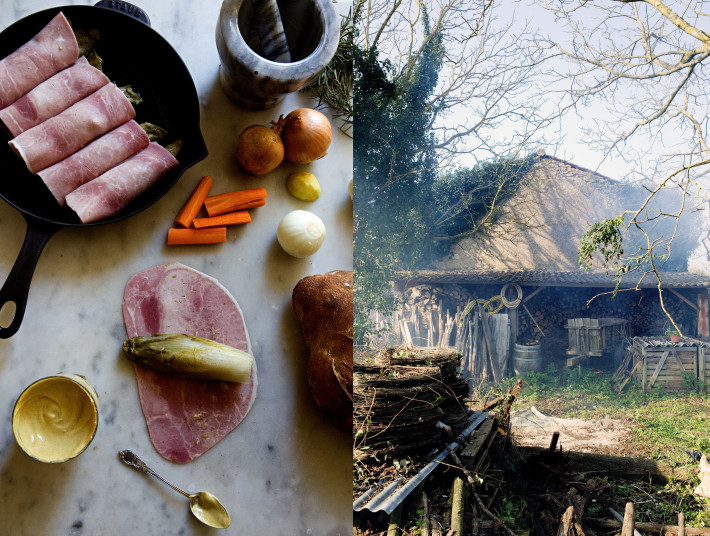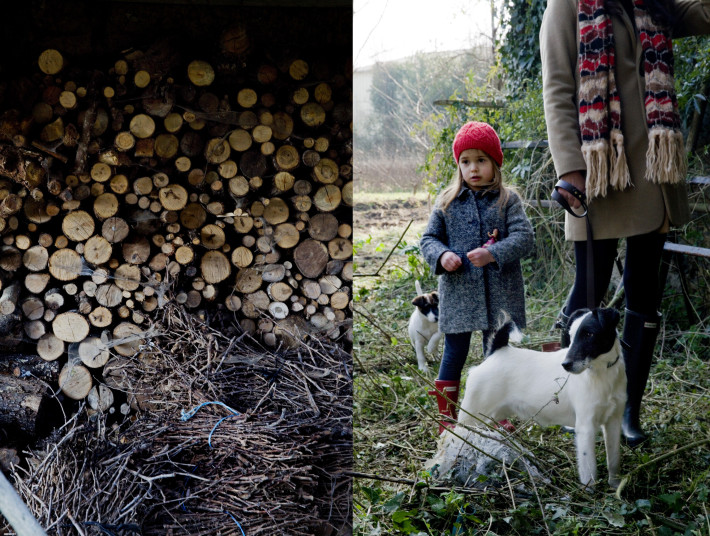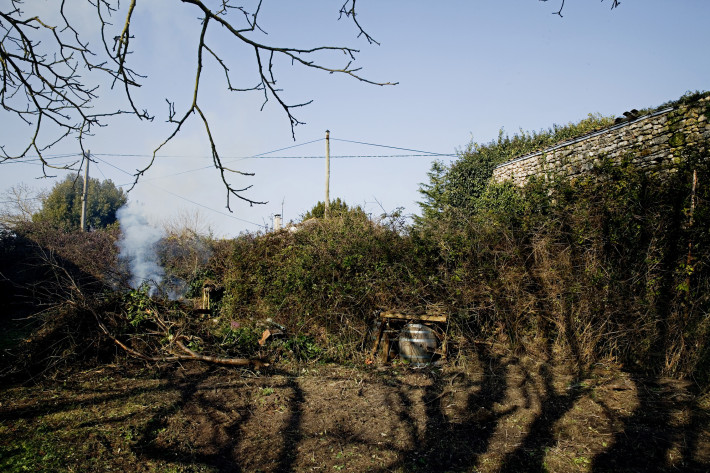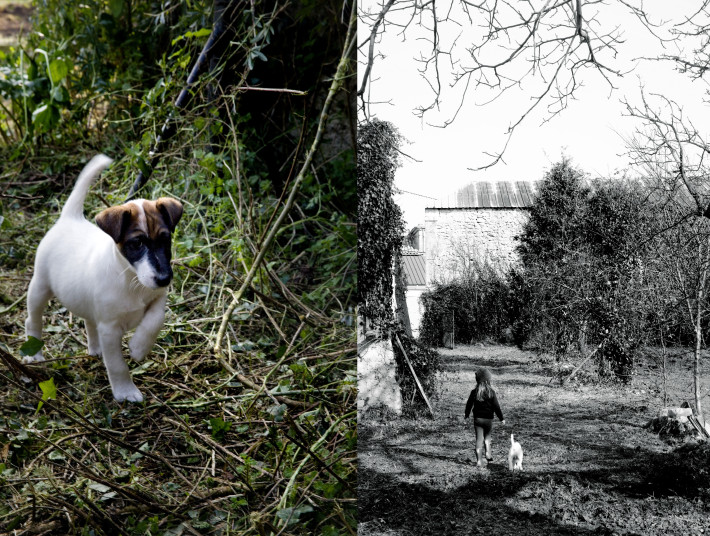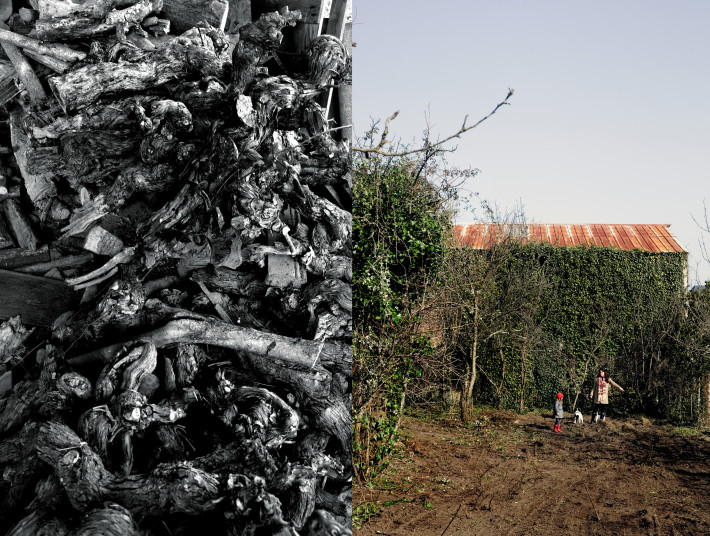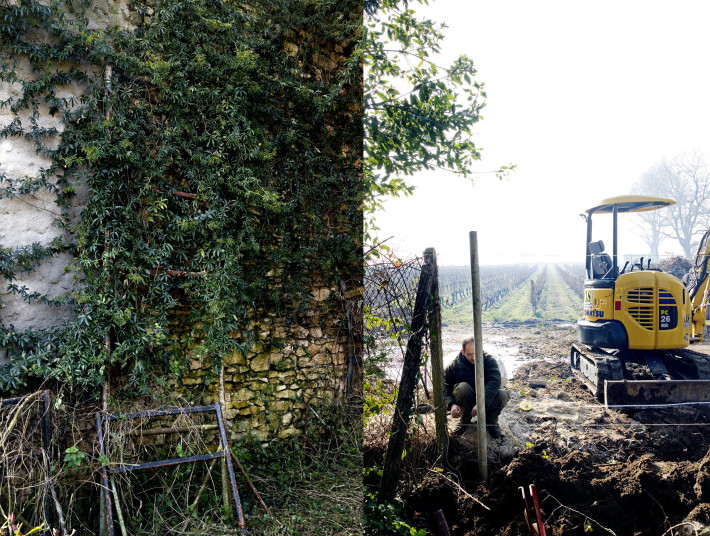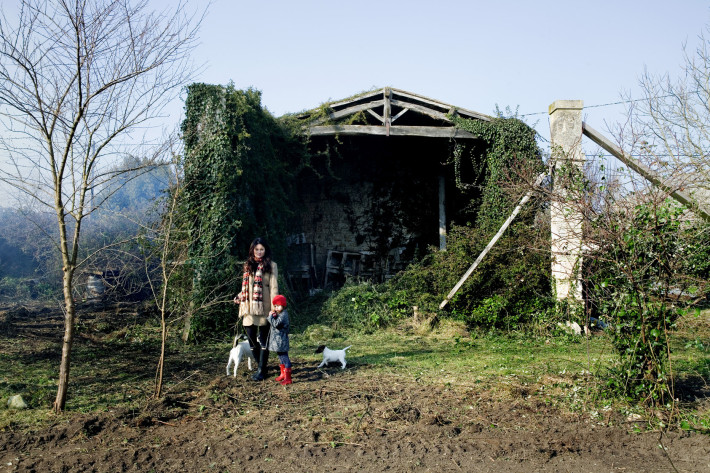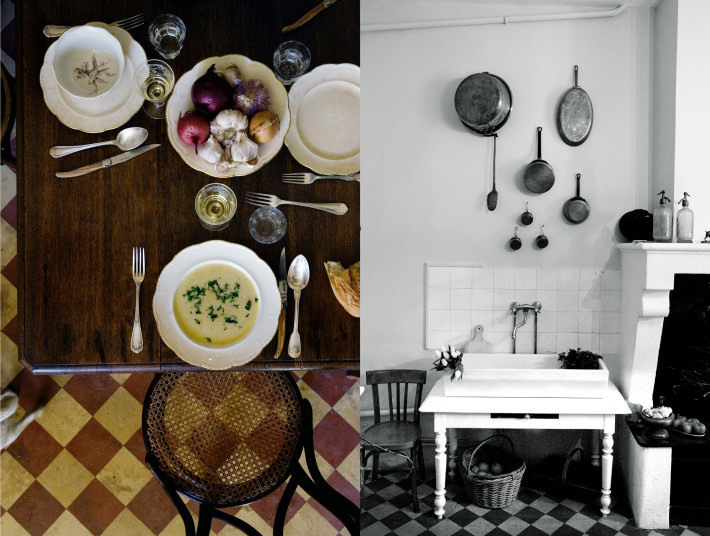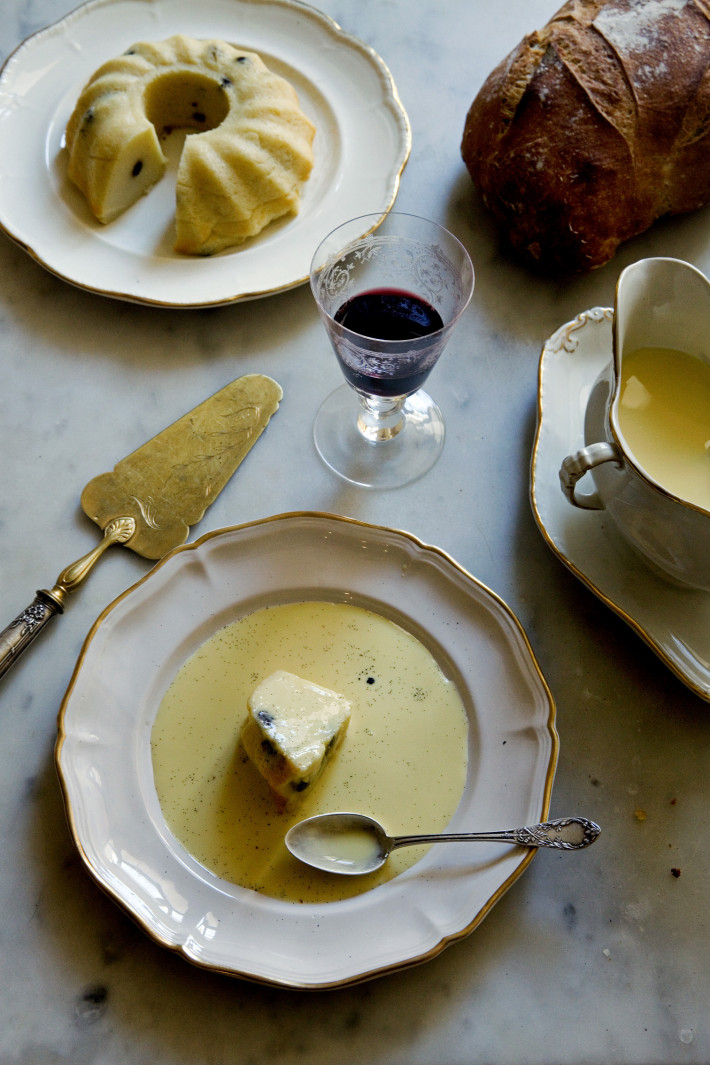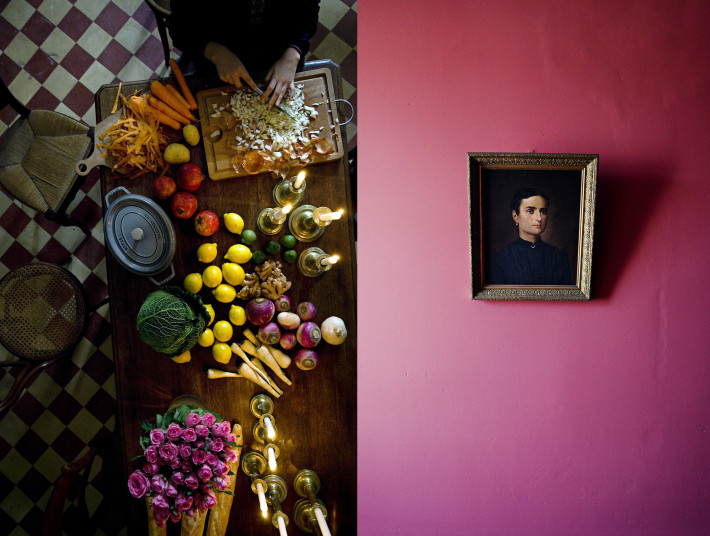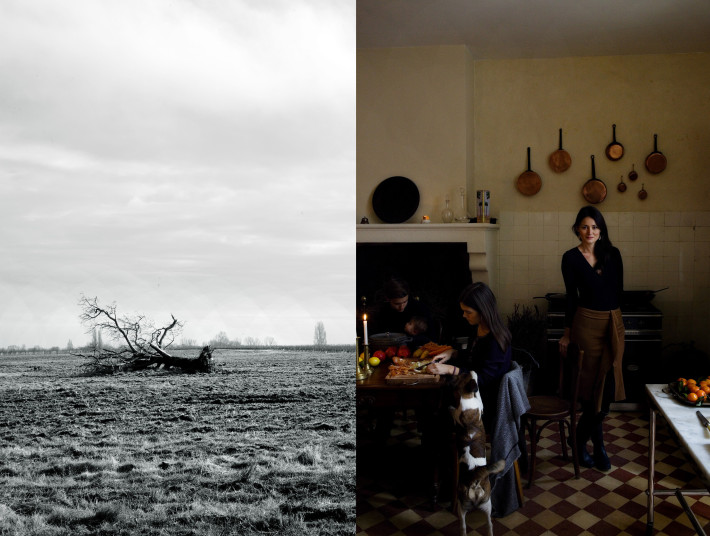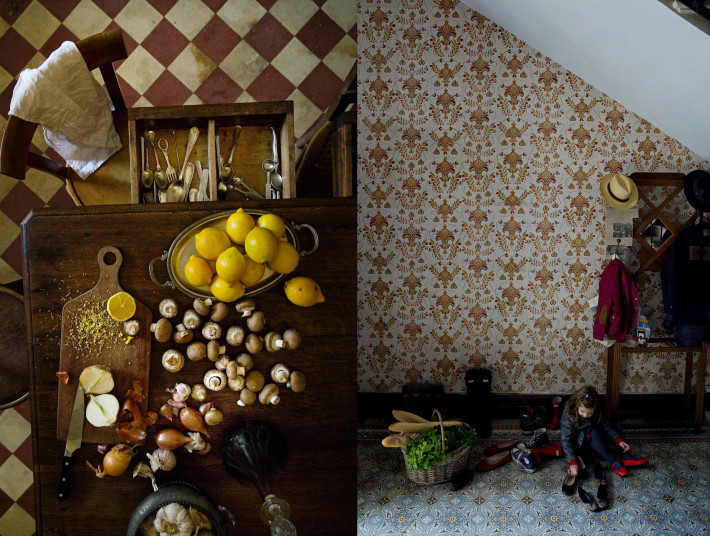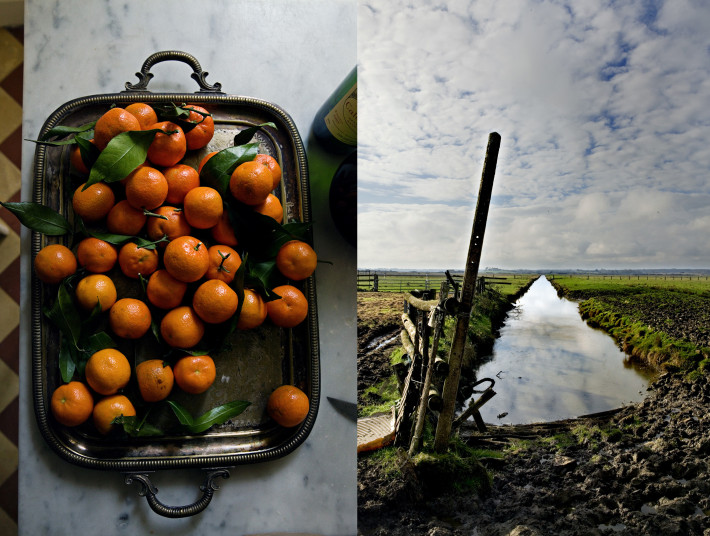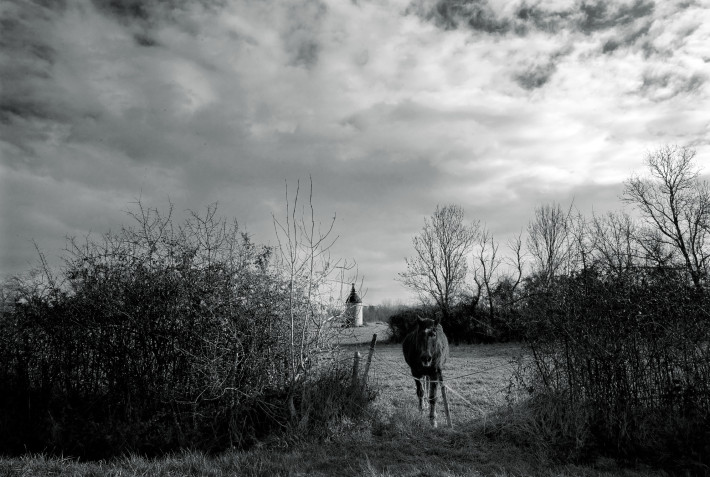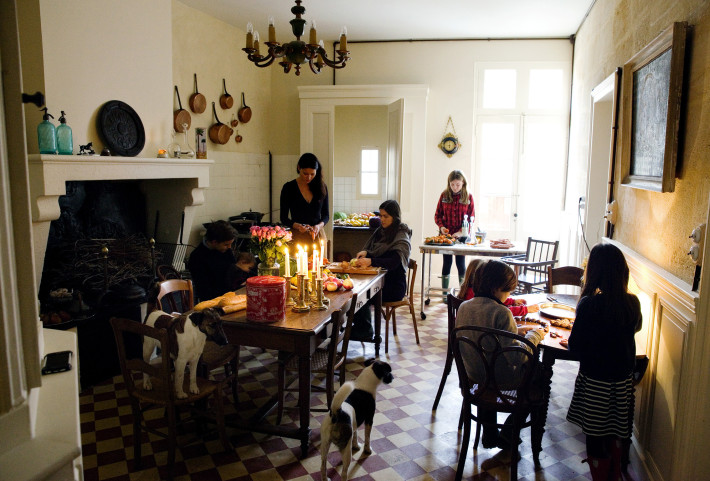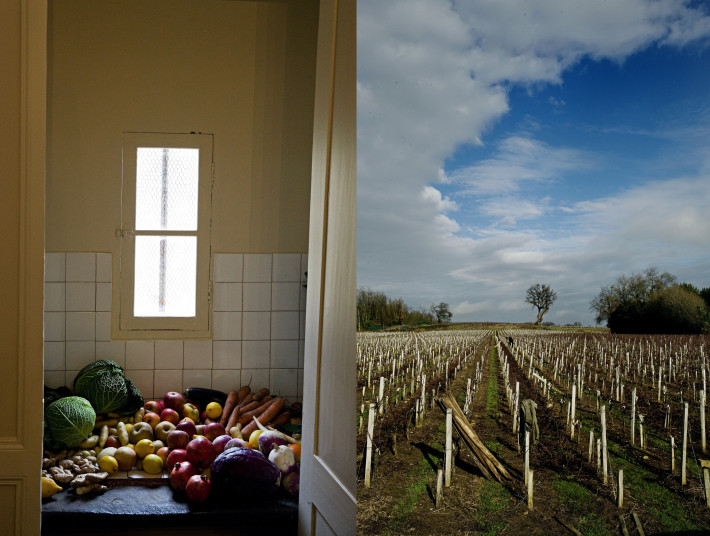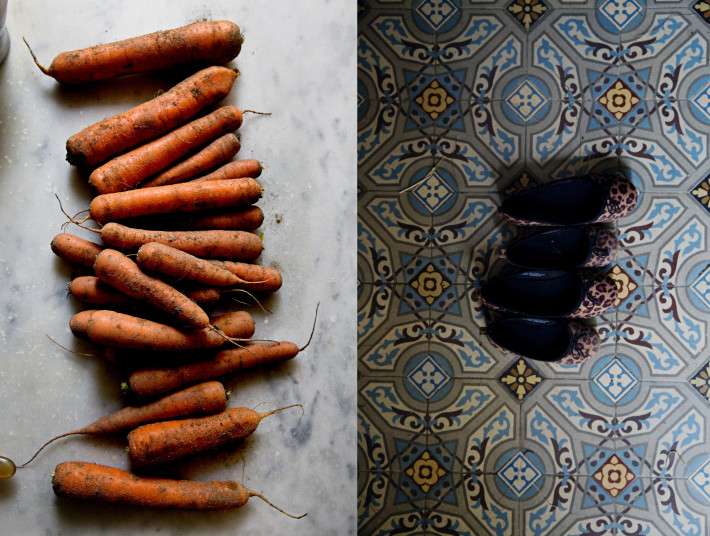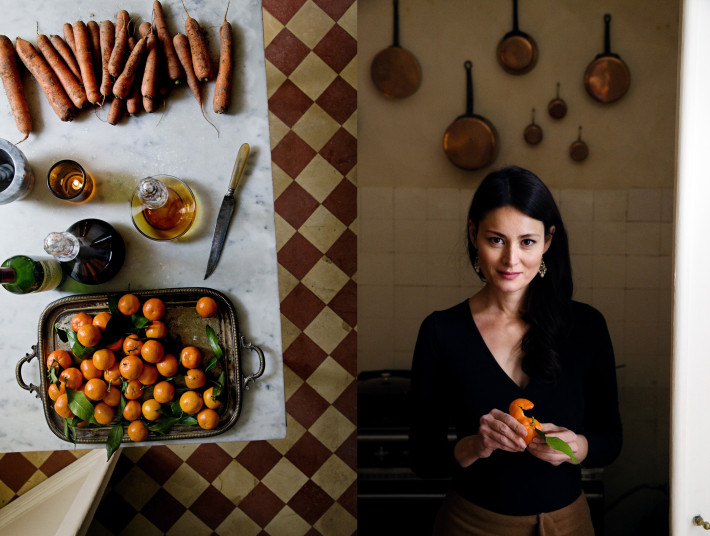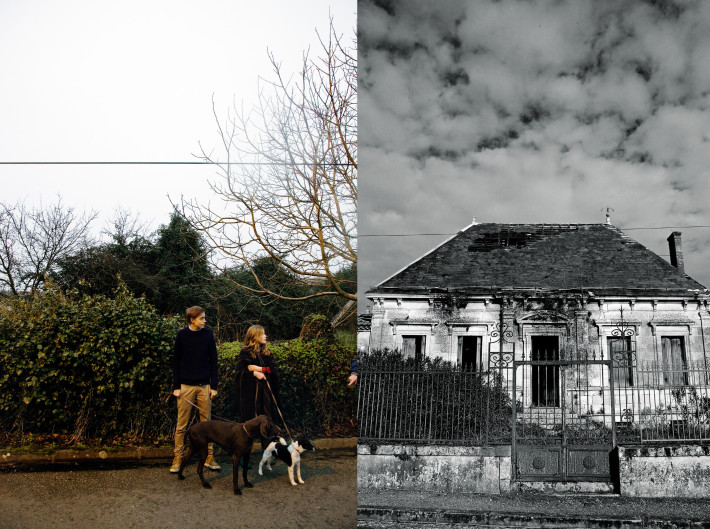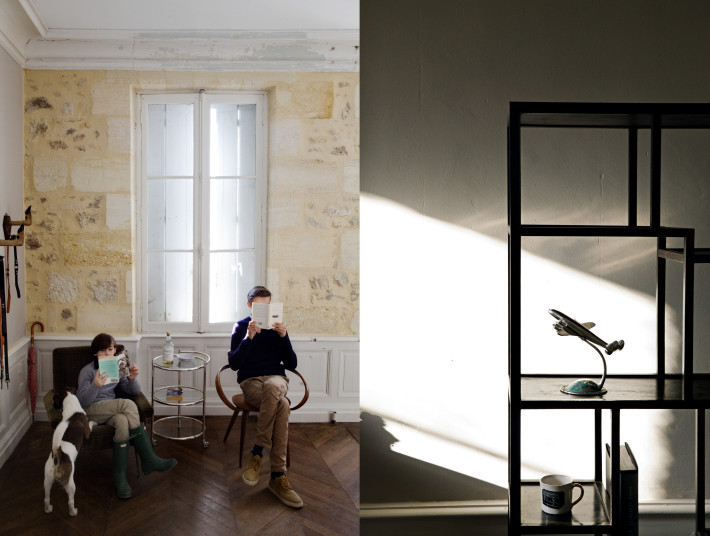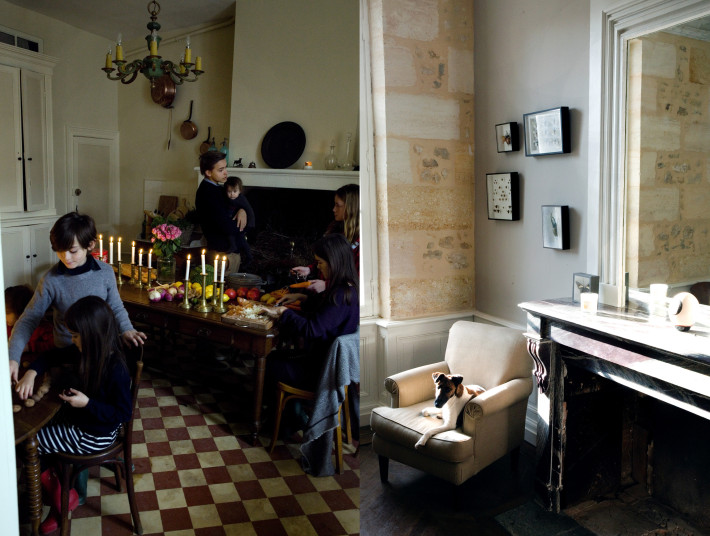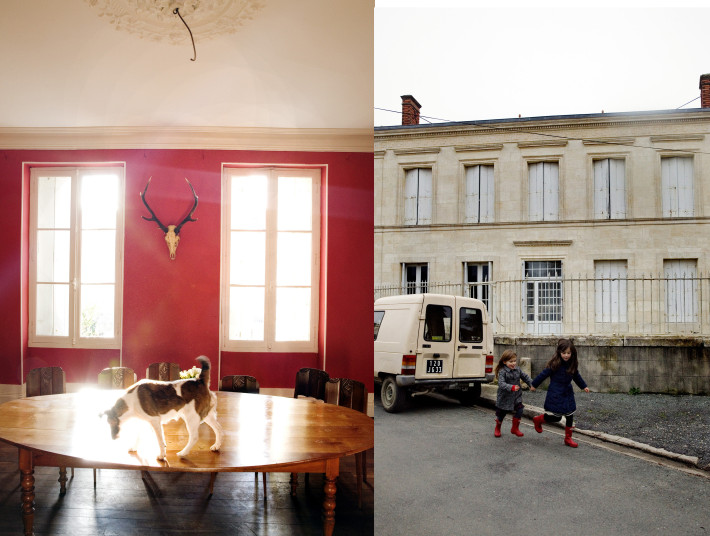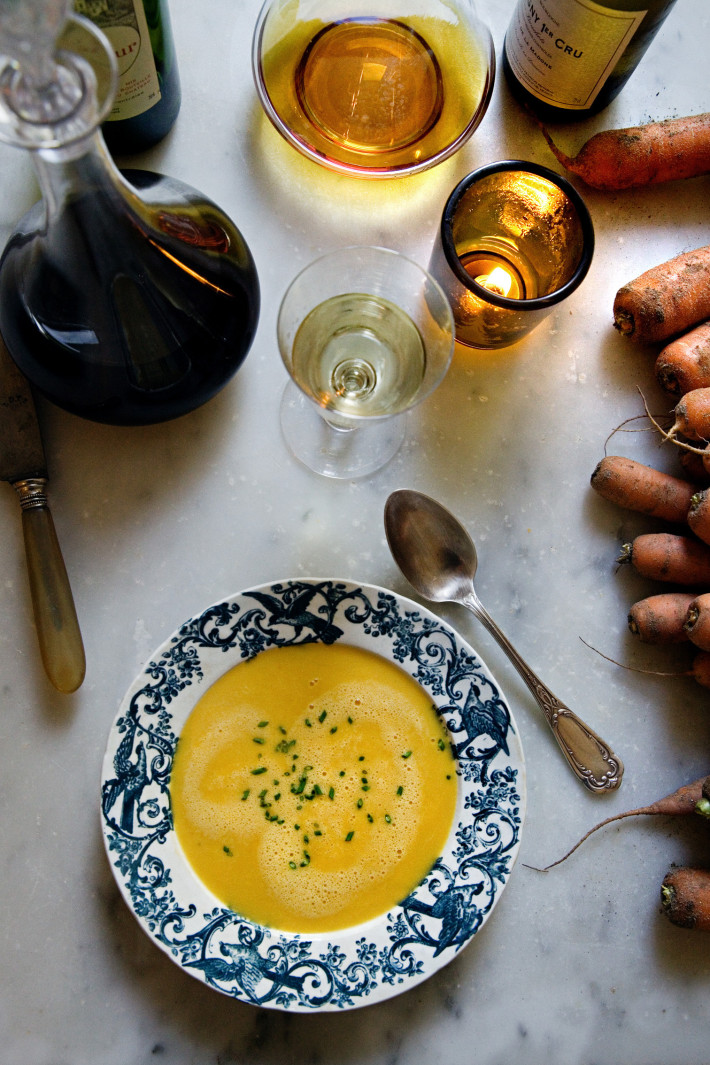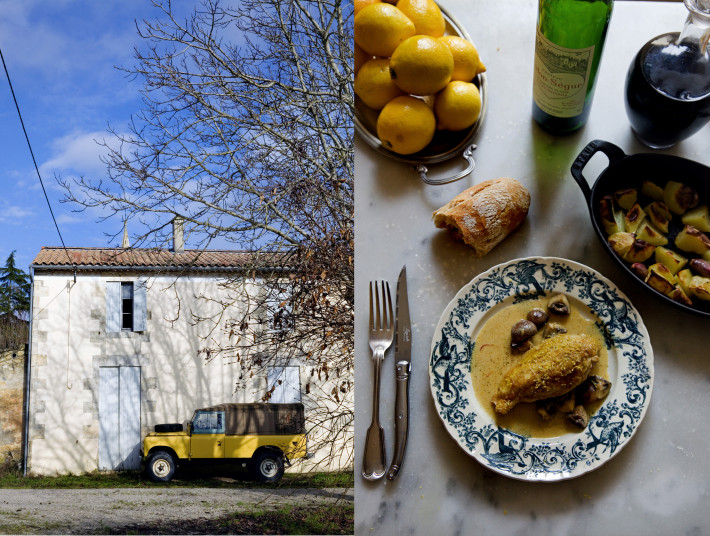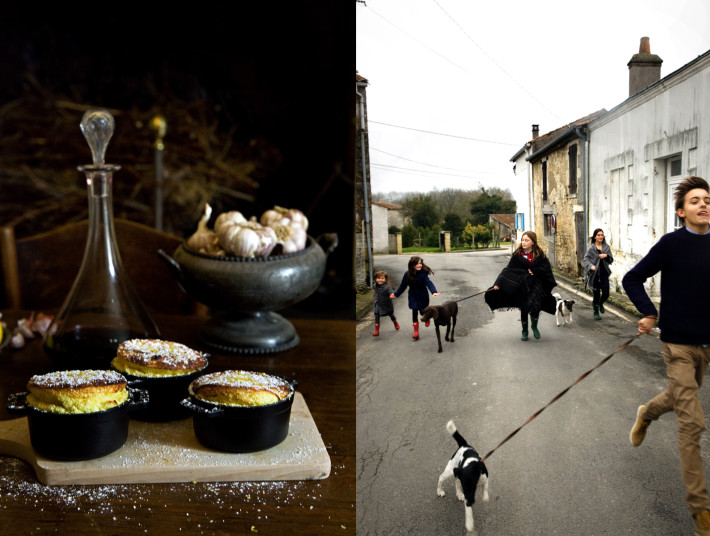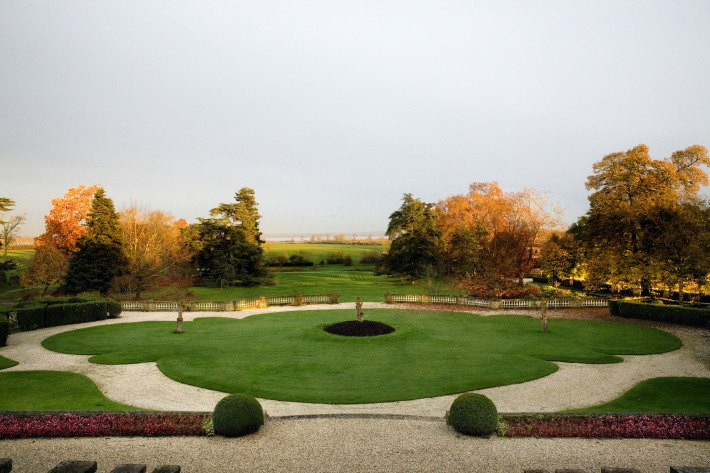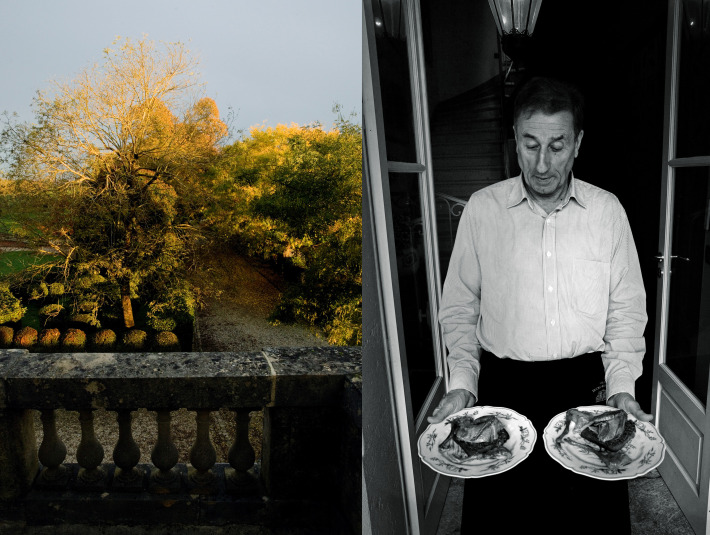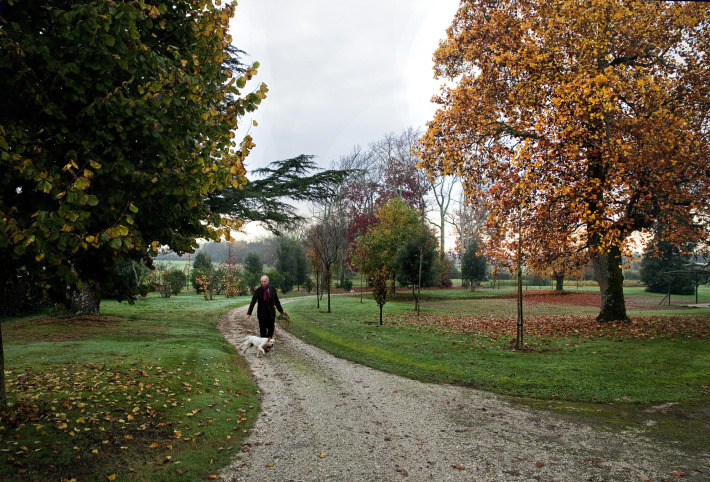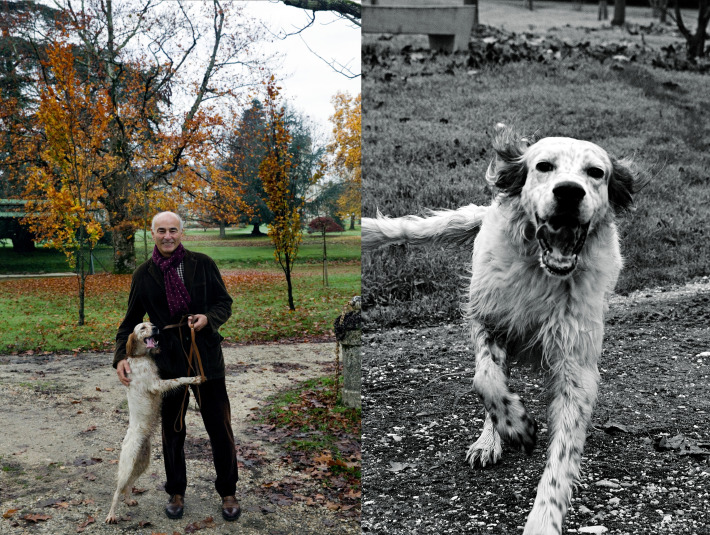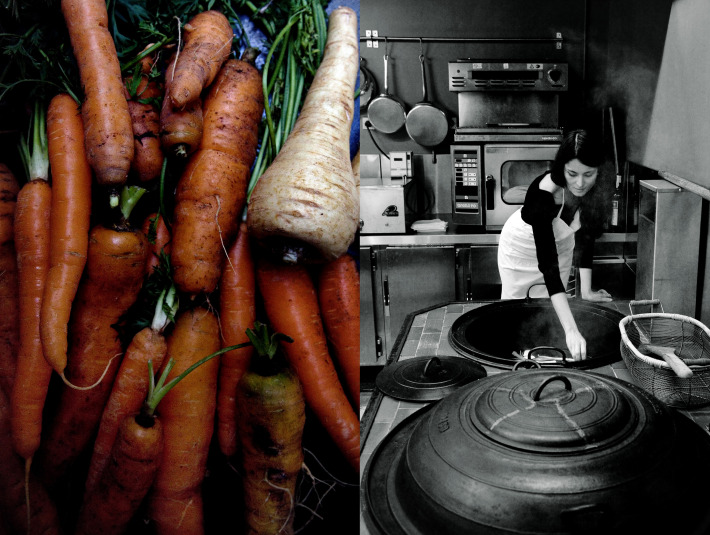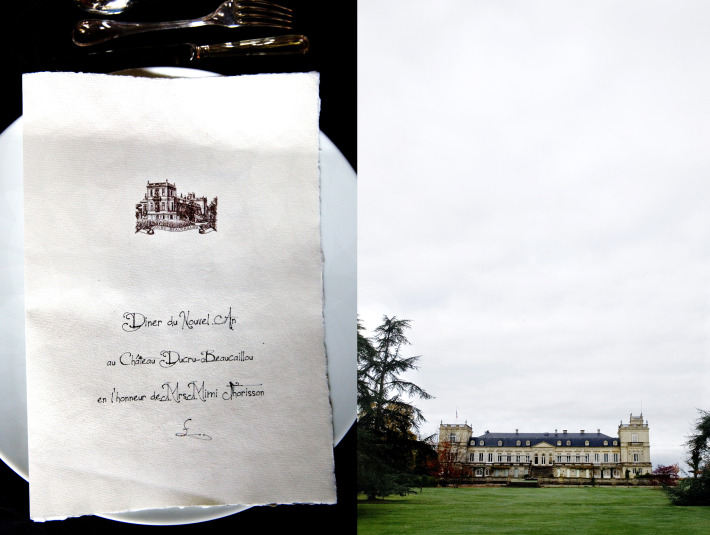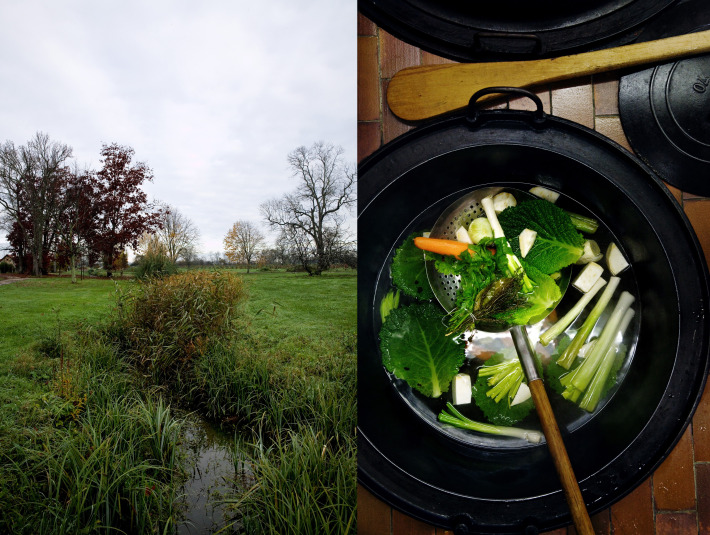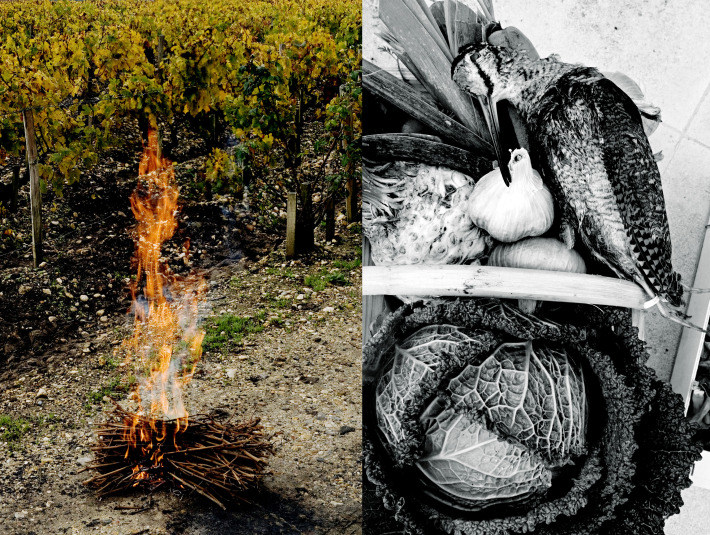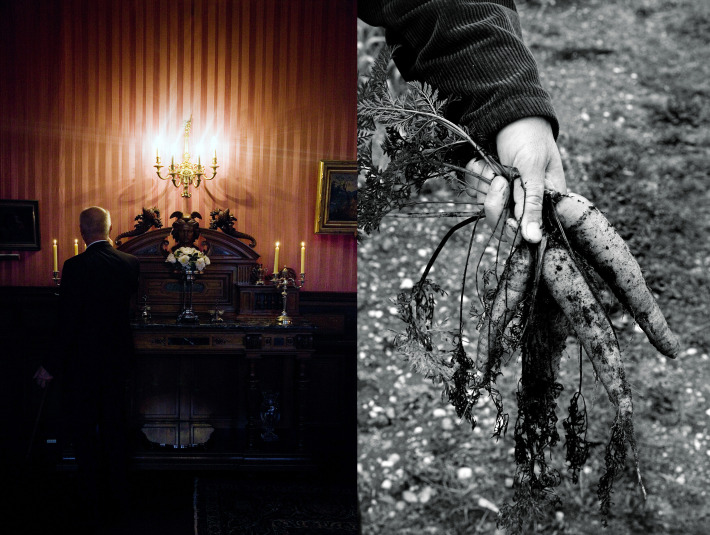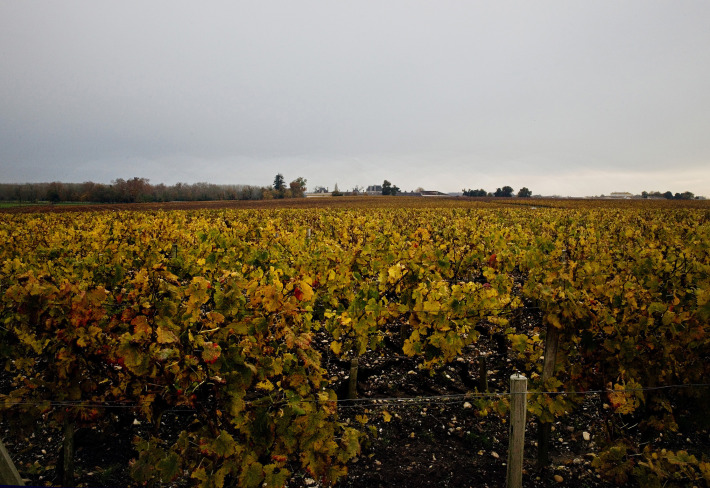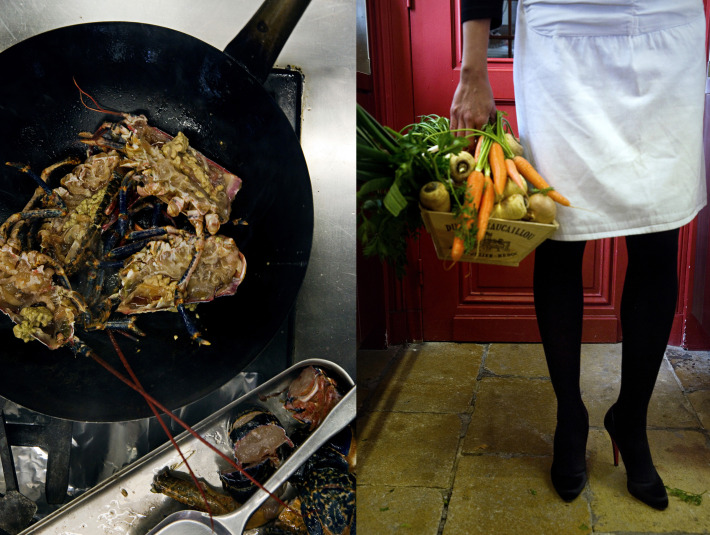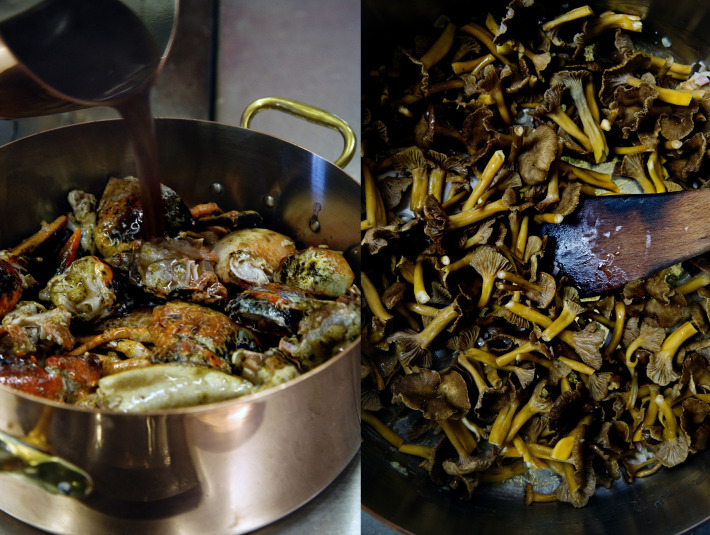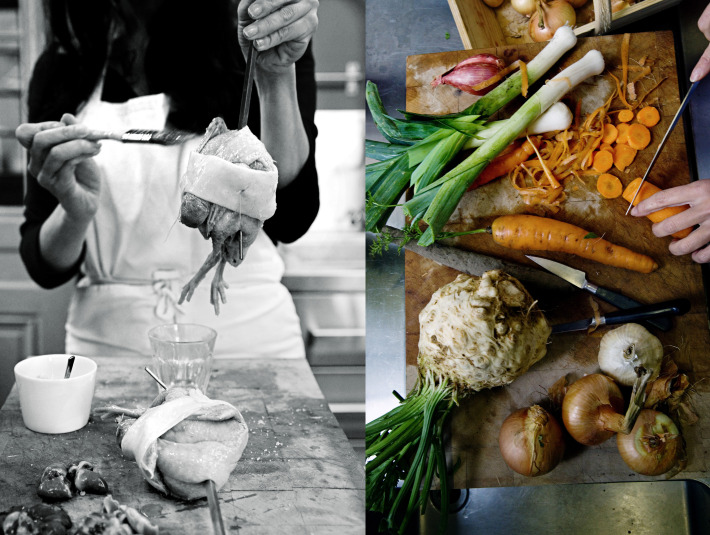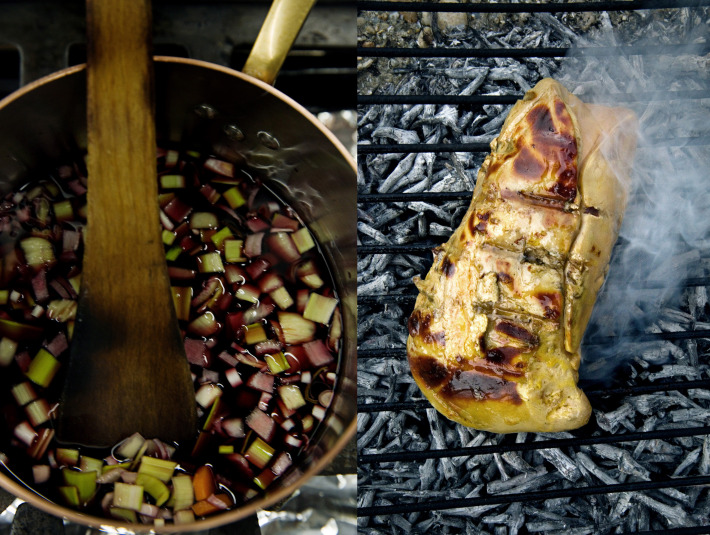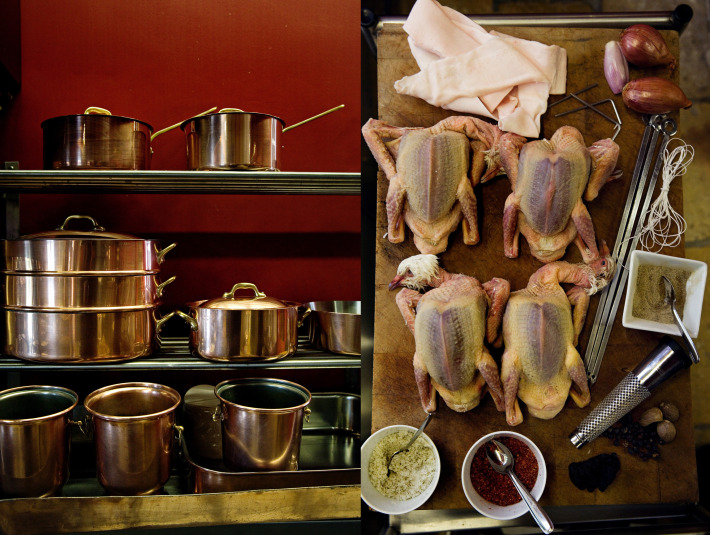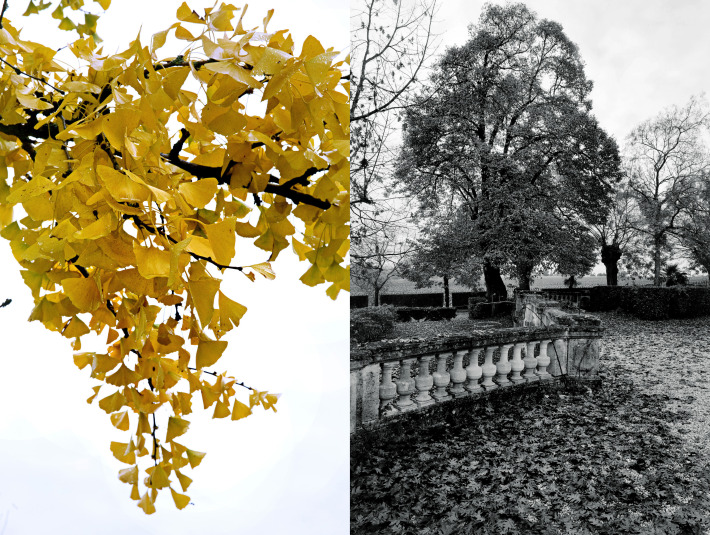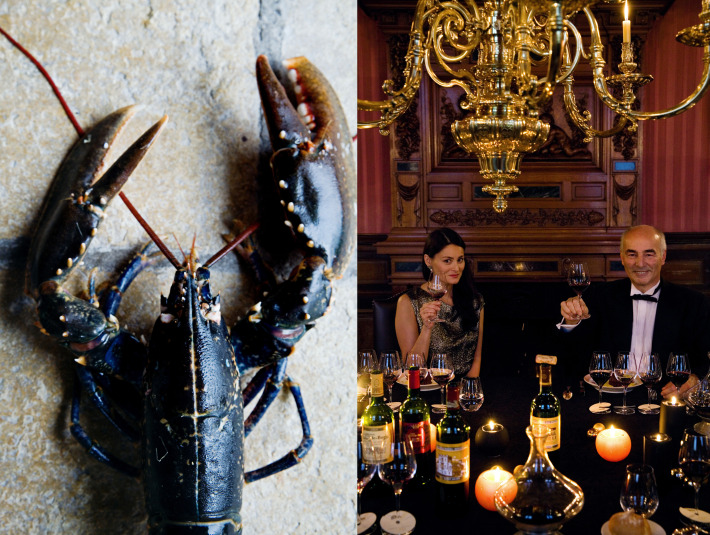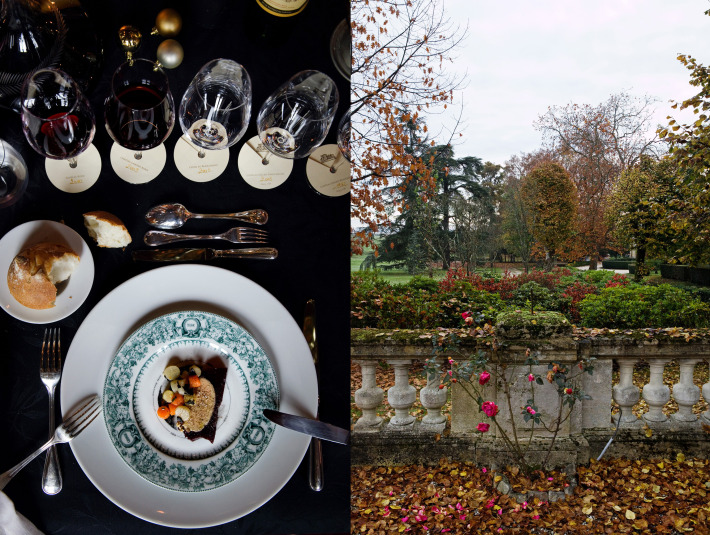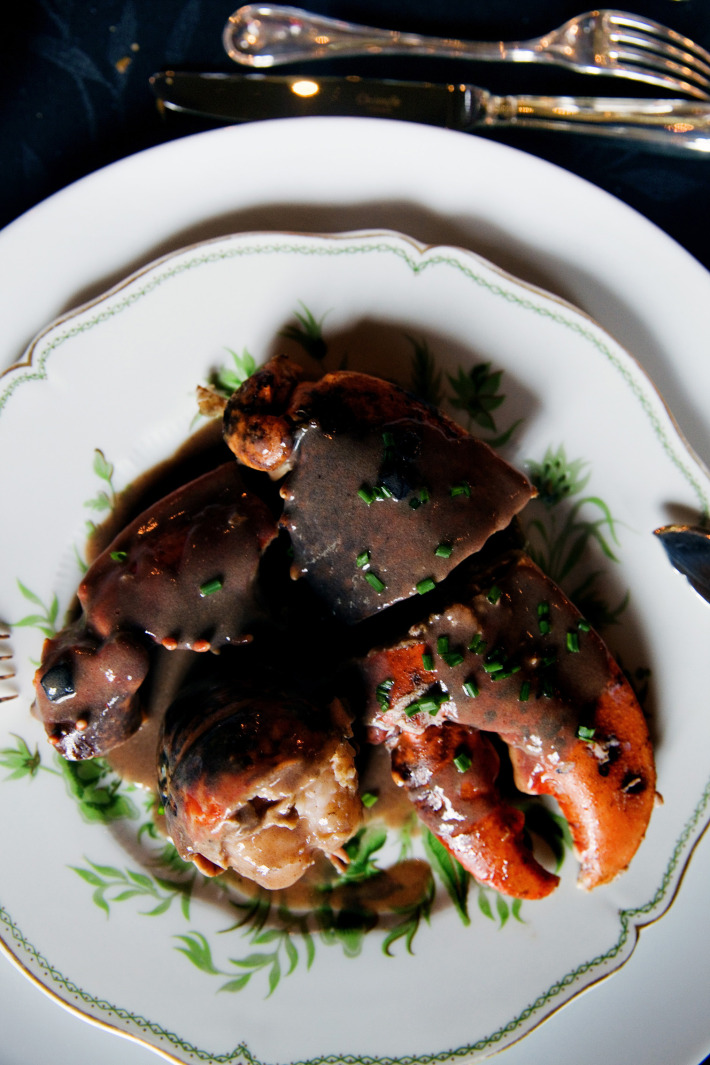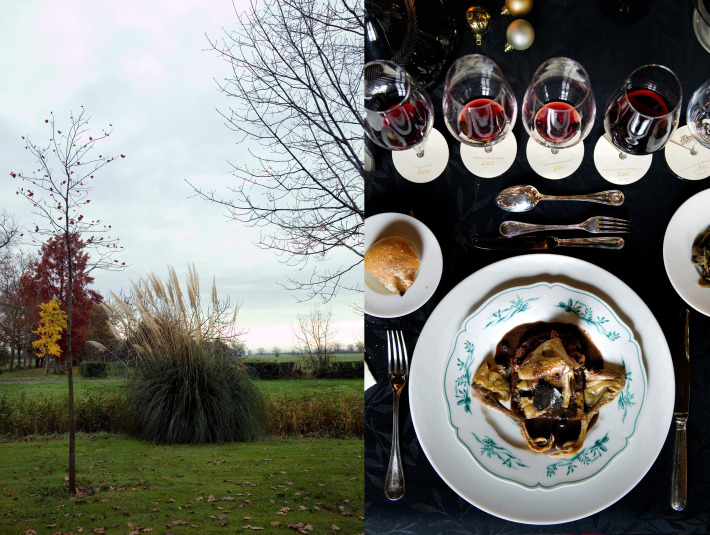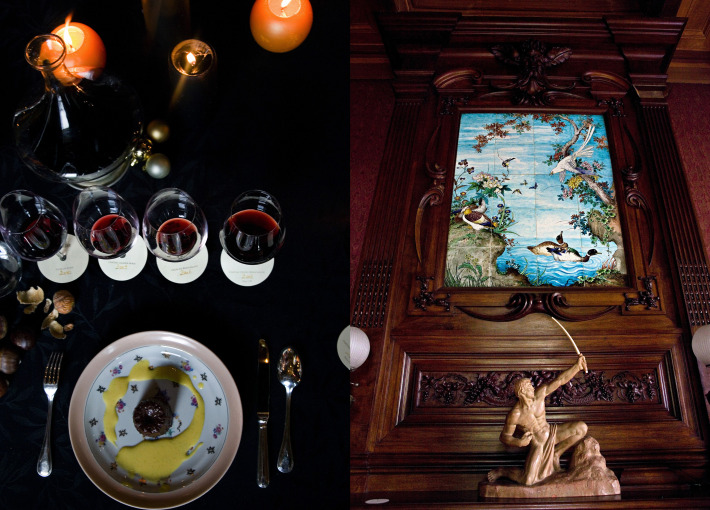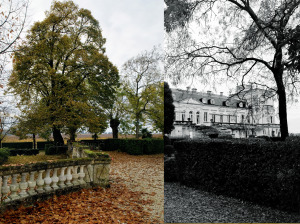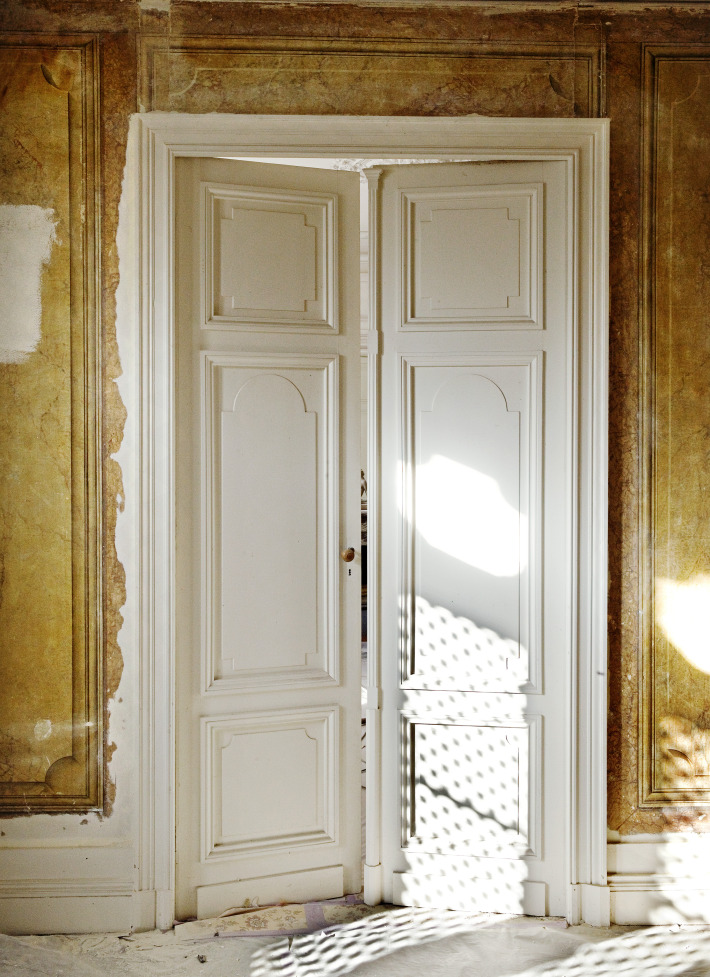Food & Wine
Let’s imagine …
… you are seated in a restaurant or even better, a bistrot. A nice one! You are lunching alone and you order yourself a little “Coupe de Champagne”, just because it’s … Wednesday. It arrives, gloriously cold, joined by the crispiest radishes with the creamiest butter. You sprinkle it with some fleur de sel, take one bite and one sip of Champagne. Heaven! Now the waiter brings the menu. So many good choices but you are leaning towards the classics. An onion soup, a confit de canard (duck confit) and to finish, a crème caramel. Could life possibly be better, at least on a Wednesday. Did I say it was raining? You enjoy looking out the window, at people running between houses glazed with rain, coats over their heads, hailing taxis. From your seat everything looks charming. Soon your choice of wine arrives. A ballon of red Bordeaux (of course), perhaps a nice St Julien. You resisted going for half a bottle, you are after all alone. The soup is so good that it reminds you, in case you have forgotten, why you love French food and when the waiter takes your bowl you wonder if you should order another glass of that delicious wine, by now precious little is left. You resist, it’s a Wednesday you remind yourself. When the confit arrives you have somehow managed to finish that first “ballon de rouge” and how could you possibly resist another, the confit is practically screaming for it. “Tout de suite” the waiter says and while you’re waiting you sample the garlic potatoes. They’re wonderful by the way. Now you go for the duck, wonderful also. A sip of water and, well, where’s that wine? Next time you catch the waiter’s eye you signal him gently and from the corner of your eye you see him whisper something in a junior waiter’s ear and nod in your direction. You feel safe, another bite, another sip of water. Still heaven but now the gods are getting impatient. That’s the last you see of the junior waiter. The phrase “does our waiter still work here” never felt more relevant. Duck is getting cold, half finished. Your mouth feels greasy, the water so very plain – no match for a meaty, fatty duck. How could things possibly go so fast from the sublime to the sensationally unsatisfying. You are itching in your seat, worried that if you take your eyes off the older waiter who seems to be making a point of turning his back at you that the glass will be gone forever. Then he leaves the room. That’s when you give up, finish your meal and try not to let the whole thing affect your mood. Finally the first waiter appears again, his grin slowly erased by your, not at all rude but somewhat firm recalling the wine from oh so long ago. At last the wine arrives but this glass never got to meet the duck, she’s long gone, firmly registered in your food history as a clear case of could have beens and also rans.
Food & Wine!
The man who loved food
You may recall a post on this blog from last December where I visited Château Ducru Beaucaillou and cooked with the owner Mr. Bruno Borie. That was part one, now it was my turn to impress, to match Bruno’s very impressive New Year’s eve menu. You may also recall that I mentioned Bruno’s belief (and mine) that good food and wine can not easily or perhaps not at all exist without each other. Grilled, juicy meat and … water, I don’t think so. Sole Meunière, drenched in sizzling butter and … water, a crime. Oysters and water, worst of all. When I have Chinese food I like to drink tea or even beer. When I have French or Italian food, wine it is. This makes sense, not only from a gastronomical point of view but also a cultural one. Blanquette de veau and red wine grew up together. When the first ever blanquette was made, the person cooking it knew it would be paired with a simple but satisfying red. Consciously or unconsciously he or she had that in mind when they cooked it. Yellow wine from the Jura region has a special relationship with Comté cheese which is also from Jura. Throw in some fresh walnuts and sparks fly. Or a cold Guinness with Welsh rarebit in an English pub on a chilly autumn day (throw in a steak and kidney pie and even a bag of crisps). Whether it’s an elaborate tasting menu with 8 different wine and food pairings, the Sunday roast or just the Monday stew, I can’t think of a meal that isn’t improved and sometimes even completely reliant on having a glass of wine to dance with. Of course I am exaggerating slightly, in fact I very often skip wine at lunch. One must not be too excessive. Good food can be enjoyed on it’s own but the point I am trying to make is that it is almost always improved by the presence of good wine.
Which brings me back to Bruno Borie and the lunch we had together earlier in the summer. As I said it was my turn to come up with a menu and after his star performance in December it needed to be good. It also needed to pair really well with wine, and since he was bringing a fine selection from his own vineyards the menu needed to pair well with sensational reds. We have a lot of kale in our garden, an abundance, so I wanted to incorporate that. Bruno is fond of Madeira wine so including that would be a plus. Also, he is very fond of Asian culture and we have often wondered what wines pair best with Asian food or what Asian food pairs best with big Bordeaux. I wasn’t going to cook Chinese food but I though I might lean slightly in that direction, cook food that was flavourful, might please an Asian palate or to be exact my father. Something tasty, meaty, something delicious. I mulled over this menu for 24hrs and the night before our lunch I had finally decided. Kale tartlets (seasonal, healthy and fresh), chicken with mushrooms cooked with Madeira and a beautiful chocolate soufflé that I did for Food & Wine (the magazine) earlier in the year. I love ending a meal with chocolate, a perfect way to spend the last sips of red, one of those unbeatable pairings, red wine and dark chocolate.
For some reason I had black pig ribs in the fridge. They had caught my eye at the butcher’s (probably because someone else was buying some) and I had bought them “just in case”. I had woken up early and before getting started on my carefully planned menu I decided last minute to throw in the ribs as a bonus dish, and cook them in wine. Other than that I just prepared the ingredients, chilled the Champagne and waited for Bruno to show up so we could start cooking. He brought a selection of his wines (something for every occasion) and very soon after his sleeves were up, the leather apron was on him and he was chopping mushrooms, the other hand still clutching the Champagne. Gaïa had no school that day so she played a big part in the kitchen, “helping” out, messing things up a little but mainly being adorable in photos. Thorir pitched in and before we knew it lunch was served. A little Bordeaux white to go with the tartlets but then on to more serious business. We paired the ribs with a Bruno’s Listrac (Fourcas Dupré) which is lighter than his other wines, perfect for lunch and really worked with the ribs. Then it was onwards and upwards, Croix de Beaucaillou to start with for the chicken, then a Ducru Beaucaillou to finish it and to enjoy with the soufflé. I’m a classicist when it comes to wine I suppose, from white to red, from good to better. I’m not sure if it’s like that everywhere but in France we always save the best for last.
ps. So many of you have sent me requests and reservations for the little restaurant we are opening in August. It’s all coming together now and in a few days I will set up a special email where you can submit reservations. We are still working on the second kitchen (night and day) but it will be ready in days. I can only say I’m excited … and nervous 🙂
Crispy kale & garlic cream tartlets
(For 6 tartlets)
200 g/ 7 ounces kale
6 bacon rashers,fried and crispy (I used black Bigorre pig rashers)
5 tablespoons of crème fraîche
2 cloves garlic, minced
1 egg yolk
A pinch of nutmeg powder
230g/ 8 ounces shortcrust pastry
Salt and pepper
Rinse the kale and pat dry.
Preheat oven to 180°C/ 350°F.
Line 6 tartlet pans and prick it with a fork.
In a bowl, mix the cream and add the egg yolk, a pinch of ground nutmeg and crushed garlic. Add salt and pepper and whisk all the ingredients together.
Divide the mixture into the tartlet pans and bake for 8 minutes. Add the kale, drizzle with olive oil and cook for a further 10 minutes or until crispy and pastry is golden.
Season with salt and place a bacon rasher on each tartlet. Serve immediately.
Braised pork ribs in Bordeaux wine
(serves 6)
Ingredients
1.4 kg/1 (3-lb.) rib pork roast
1 (750 ml) bottle of Bordeaux wine
500 ml/ 2 cups vegetable or meat stock
2 celery stalks, finely diced
3 cloves garlic, peeled and chopped finely
1 yellow onion, peeled and finely diced
2 carrots, peeled, trimmed, and diced
1 bouquet garni (fresh rosemary, thyme, sage, parsley and a bay leaf tied together) + a few extra sprigs of rosemary to scatter on top of meat
4 tablespoons extra-virgin olive oil
Salt & freshly ground black pepper
Season the pork ribs with salt & pepper. Heat olive oil in a pan and brown the pork ribs. Add the onions, carrots, celery, garlic and herbs – continue to cook for 5 minutes.
Add the wine and stock and bring to a simmer over medium heat. At this point, lower the heat, cover and cook for about 3 to 4 hours, until meat is fork-tender.
Chicken braised in Madeira wine
(serves 6-8)
A dozen chicken legs (or a whole chicken cut in 6-8 pieces + a few extra legs to keep your table happy!)
375 ml/ 1 & 1/2 cups Madeira wine
160 ml/ 2/3 cup stock
450 g/ 1 pound mushrooms, coarsely sliced
1 onion, sliced finely
4 cloves of garlic, minced
A few branches of fresh thyme
Olive oil and unsalted butter for frying
Salt & freshly ground black pepper
For the sauce
25 g/ approx. 2 tbsp unsalted butter
25 g/ approx. 2 tbsp plain flour
Preheat your oven to 180°C/ 350F. In a large dutch oven/ cast-iron cocotte, heat the olive oil and butter and brown the chicken pieces in batches all over, set aside. Add the onions, garlic and mushrooms and continue to cook for a few minutes. Season with salt & pepper and add the thyme. Return the chicken to the pot and add the madeira wine. bring to a simmer, cover and transfer the pot to the oven. Cook for 40 to 50 minutes.
When ready, remove the chicken from the pot and place pot over a medium heat. In a small bowl, mix the flour and butter until it becomes a smooth paste, then add a few laddles of sauce from the pot to create a thick sauce. Add this sauce to the pot and whisk until the sauce has thickened.
Return the chicken to the pot and give it a gentle stir.
For the crispy kale
(On a parchment paper-lined baking tray, drizzle the sliced kale with olive oil and sprinkle with salt. Cook in a 150°C/300°F oven for about 20 minutes or until crispy.).
Serve immediately with freshly baked crispy kale
Black chocolate soufflé (recipe I wrote for Food & Wine magazine April issue 2015)
(Serves 4)
OK, I have to admit, this is the best chocolate soufflé I ever made!
6 eggs, separated
100 g/ 1/2 cup granulated sugar
2 tablespoons unsalted butter, to grease the ramekins
200 ml/ 7 ounces milk
160 g/ 6 ounces black chocolate +70% cocoa
2 tablespoons bitter unsweetened cocoa powder
Preheat the oven to 200°C/ 400°F.
Butter the ramekins and sprinkle sugar all over. Place in the freezer until needed.
Melt the chocolate over simmering hot water.
Bring the milk to a simmer, adding the cocoa powder stirring constantly with a whisk, then pour on the melted chocolate and continue to stir.
Incorporate the egg yolks to the mixture, stirring constantly.
Whisk the egg whites until stiff, adding the sugar during the process and fold in to the mixture.
Spoon into 4 individual soufflé dishes and cook in a preheated for 15 minutes or until risen. Serve immediately.

